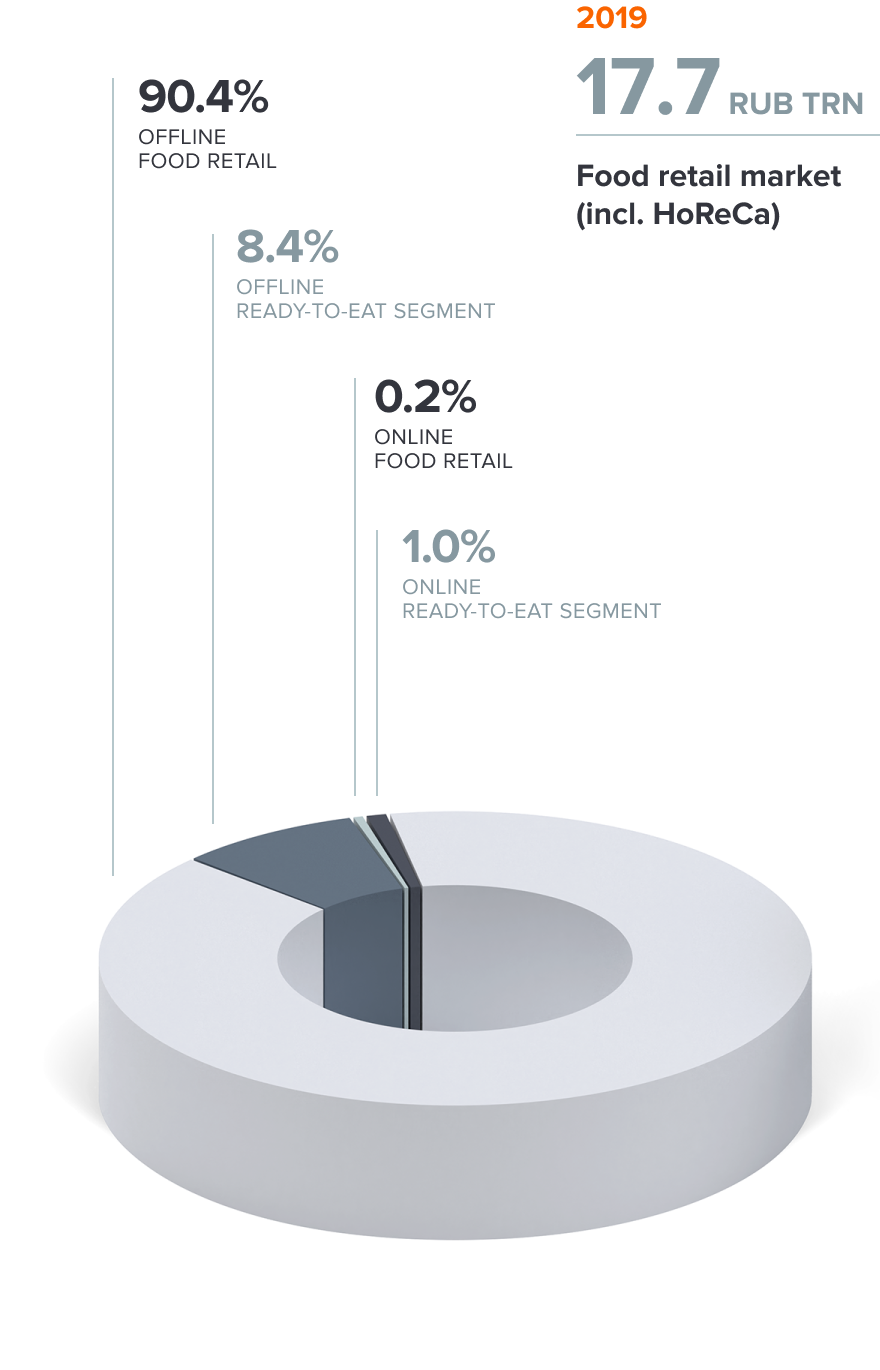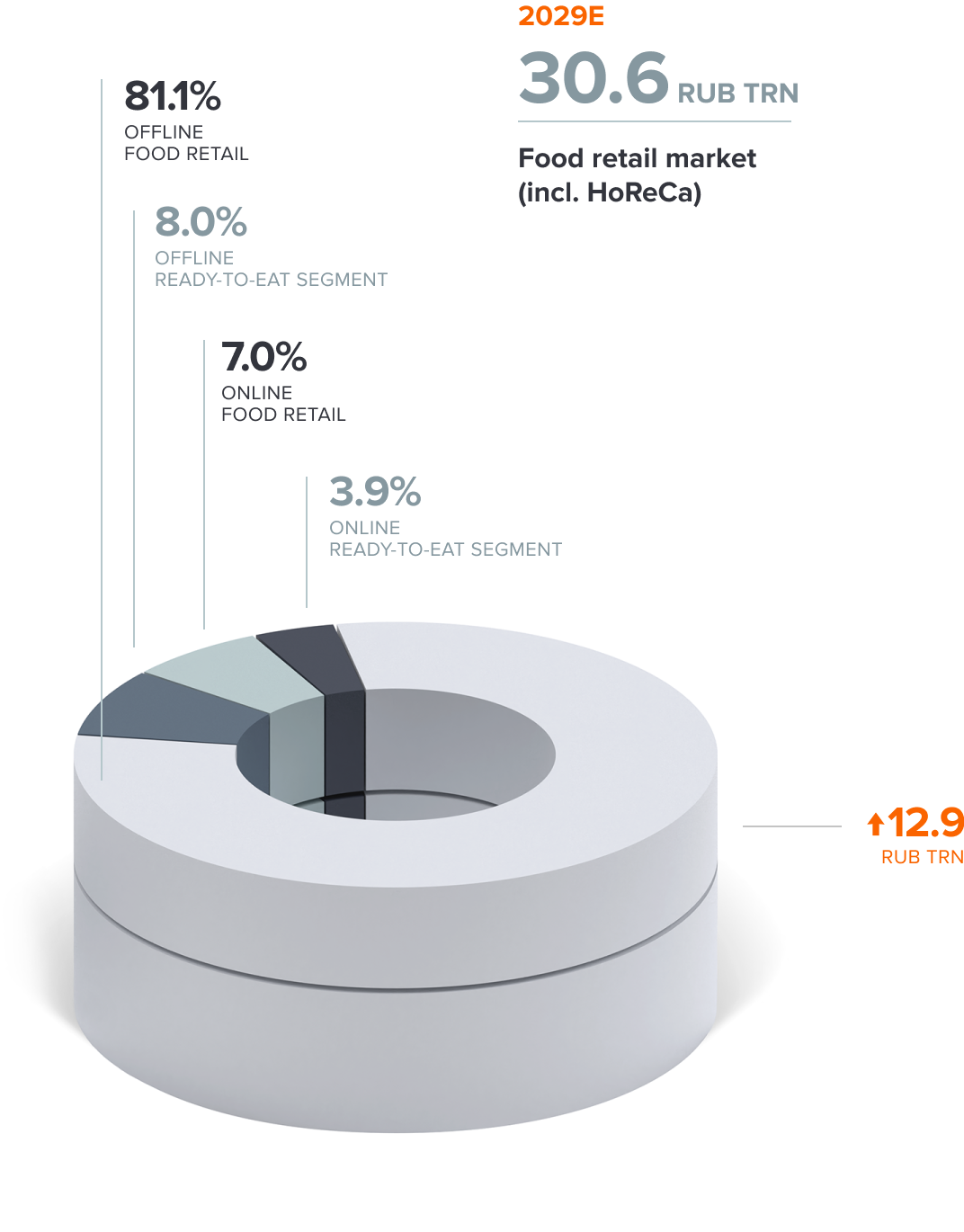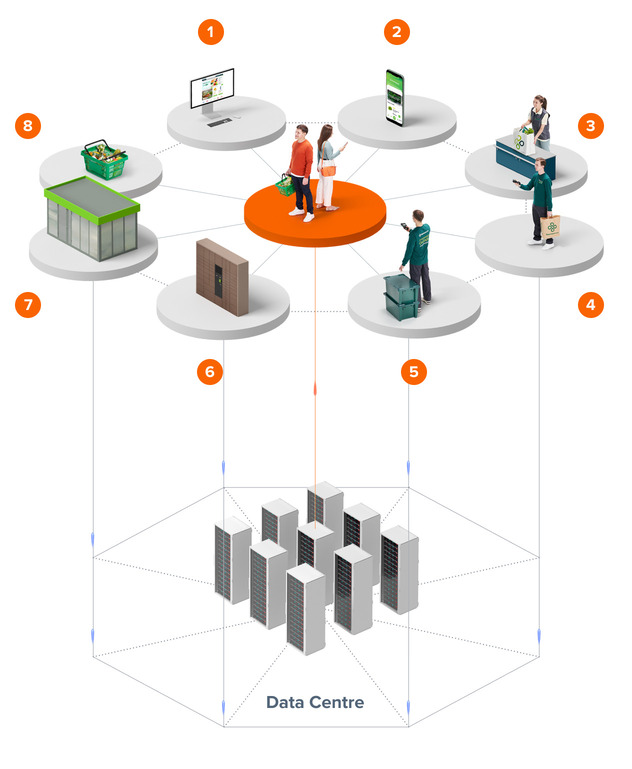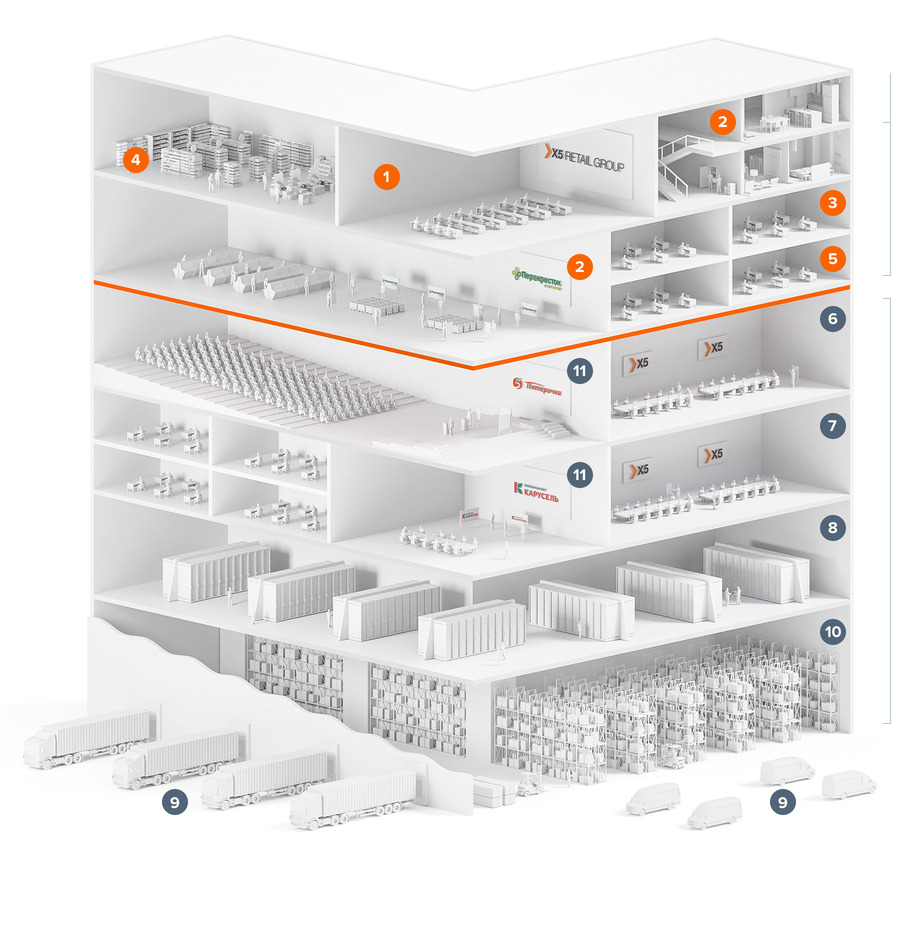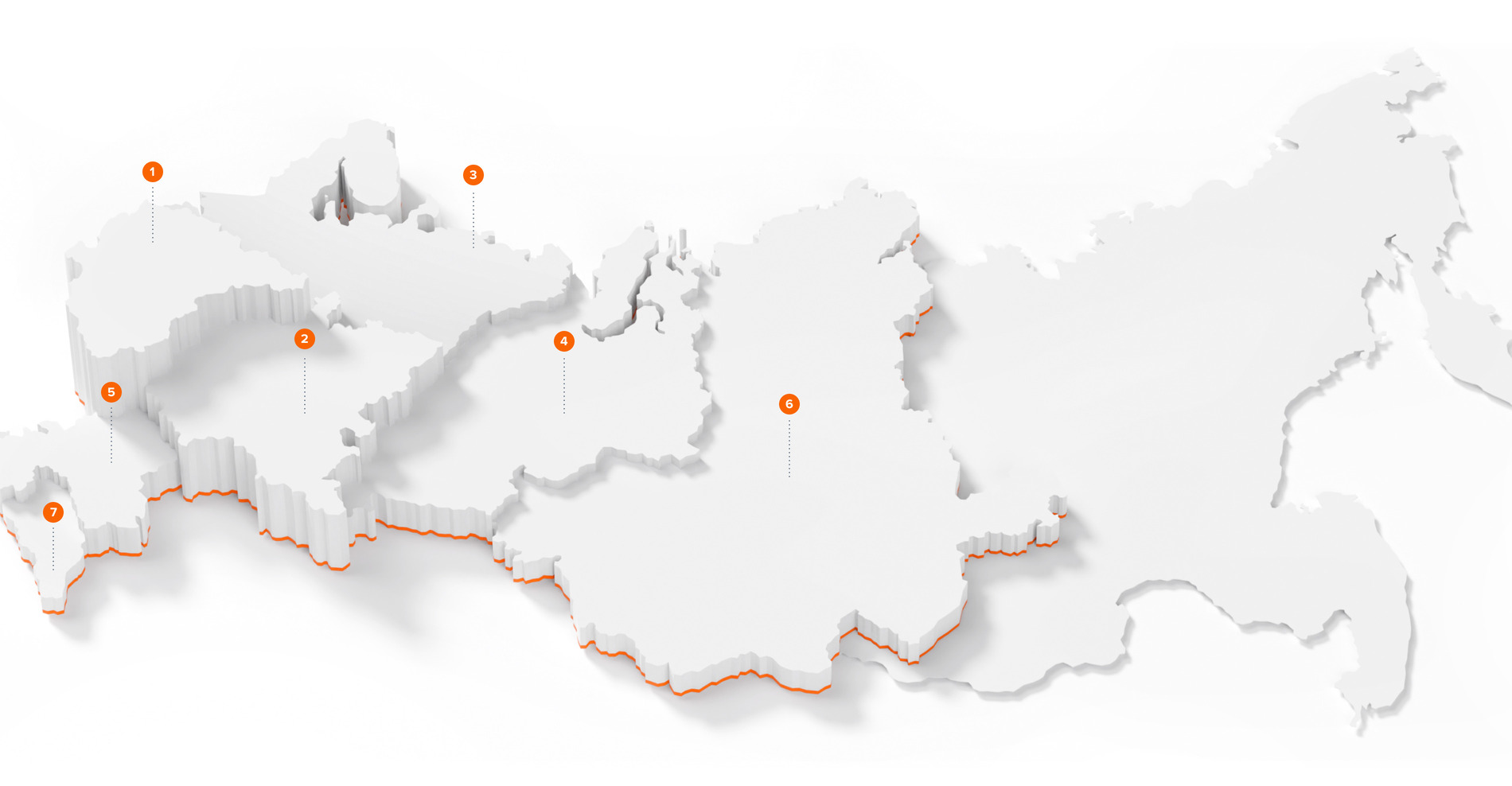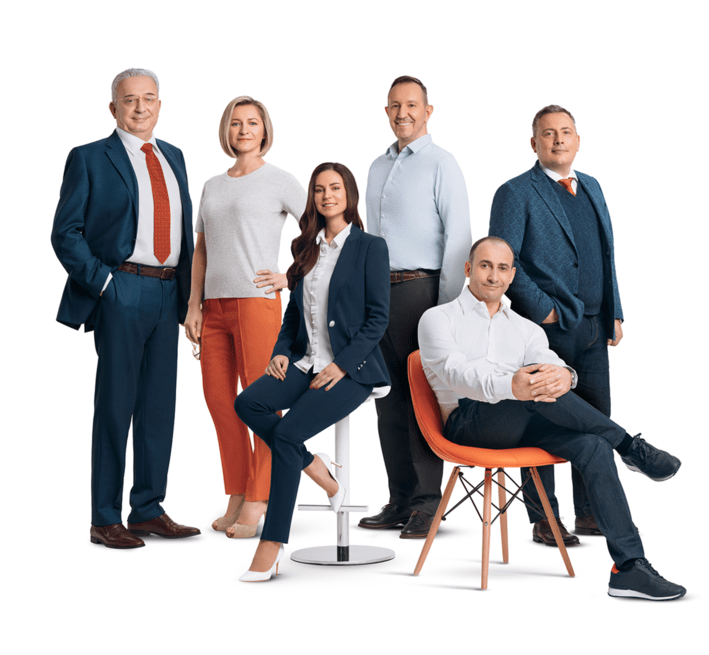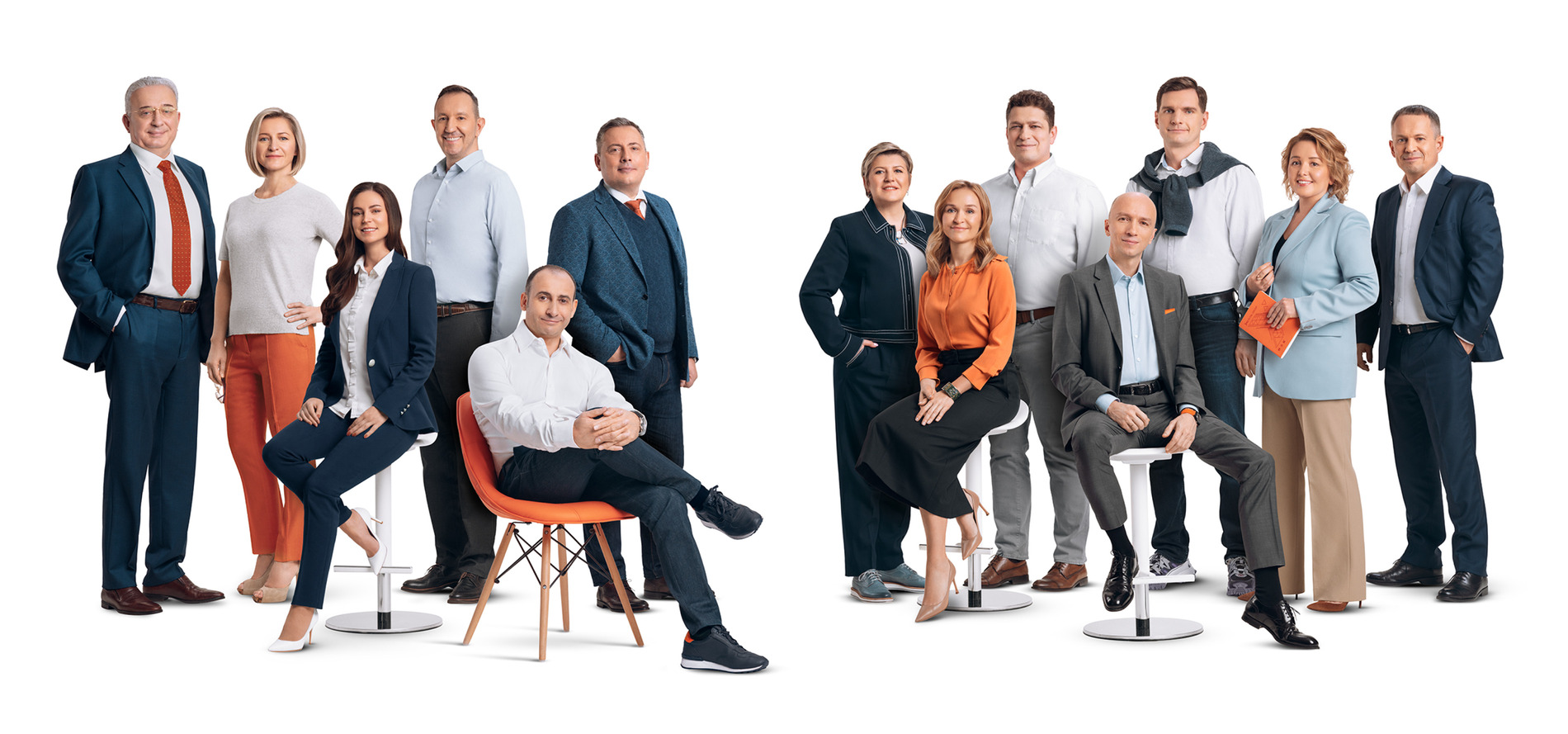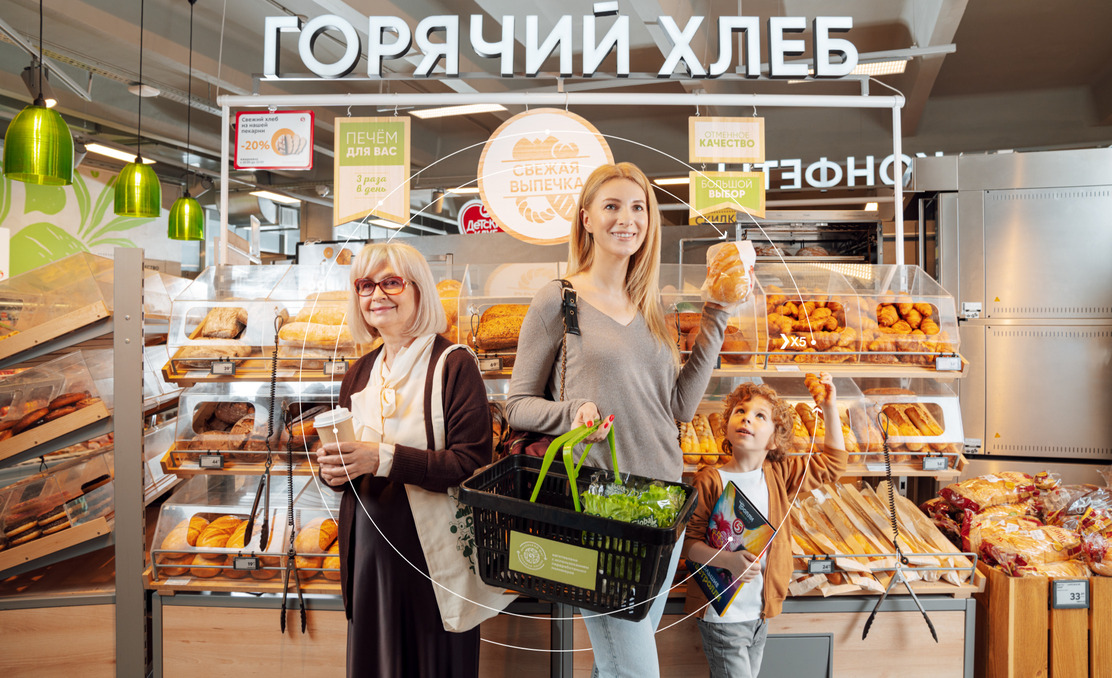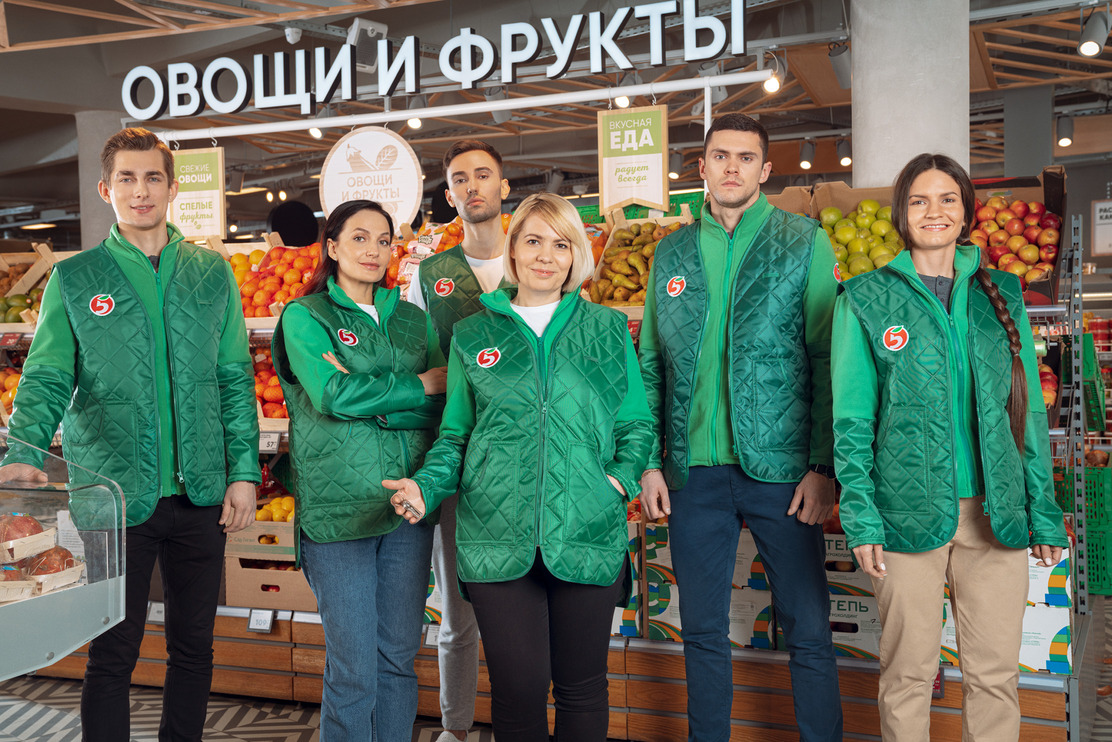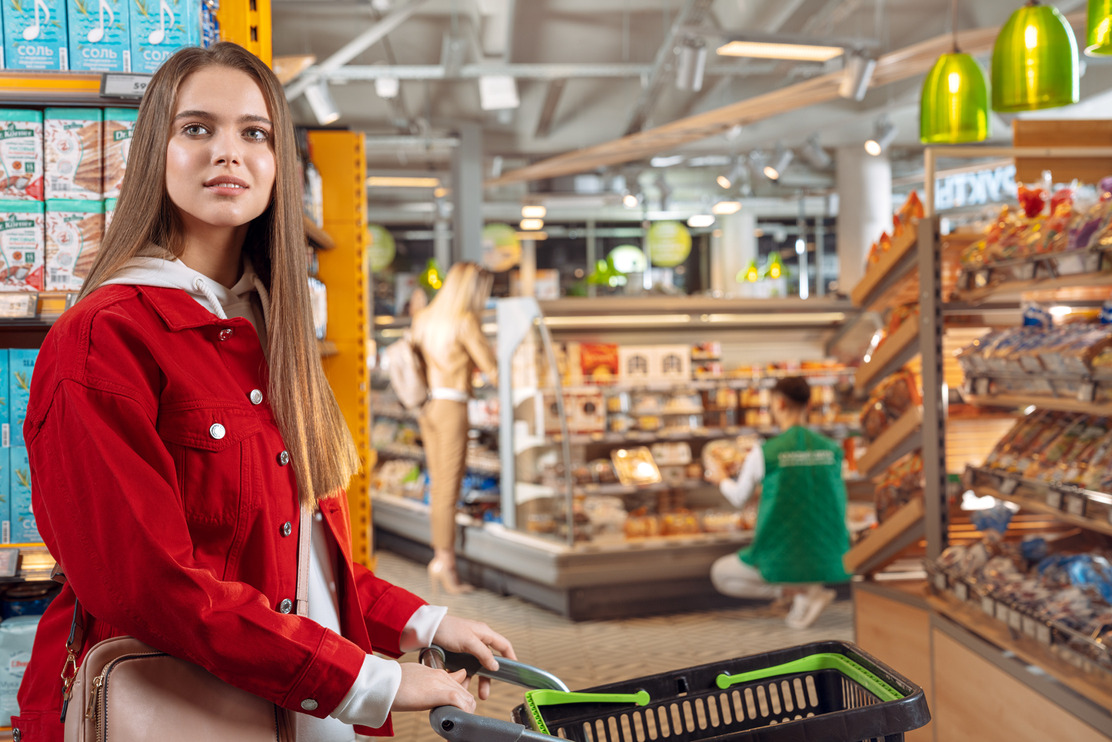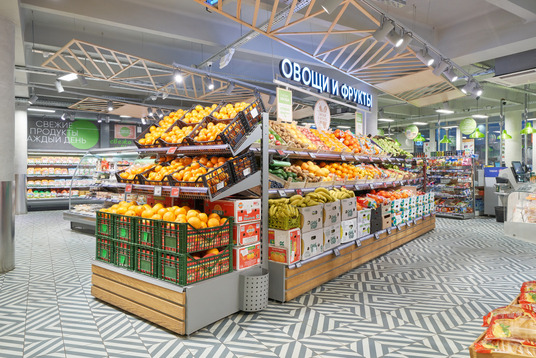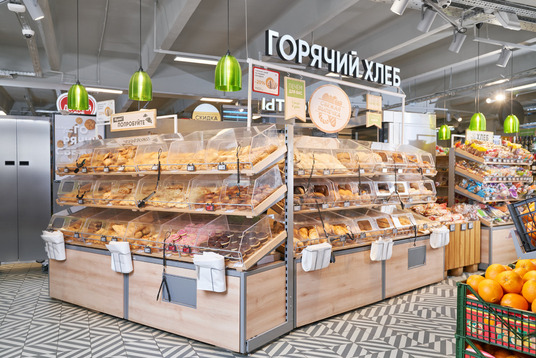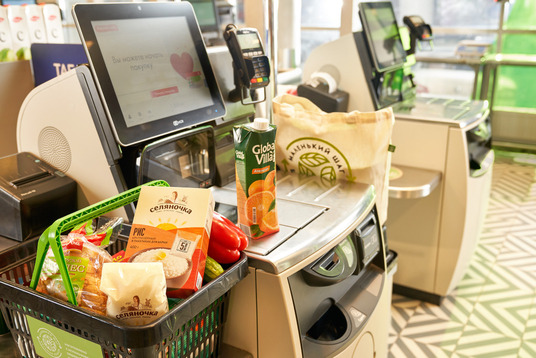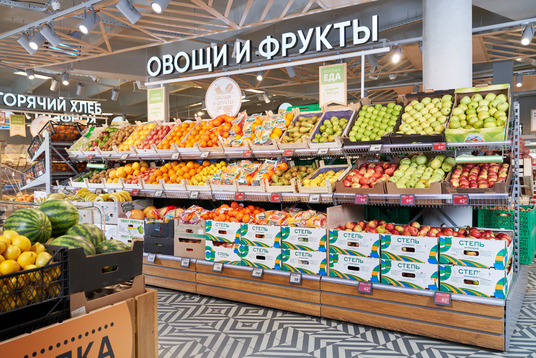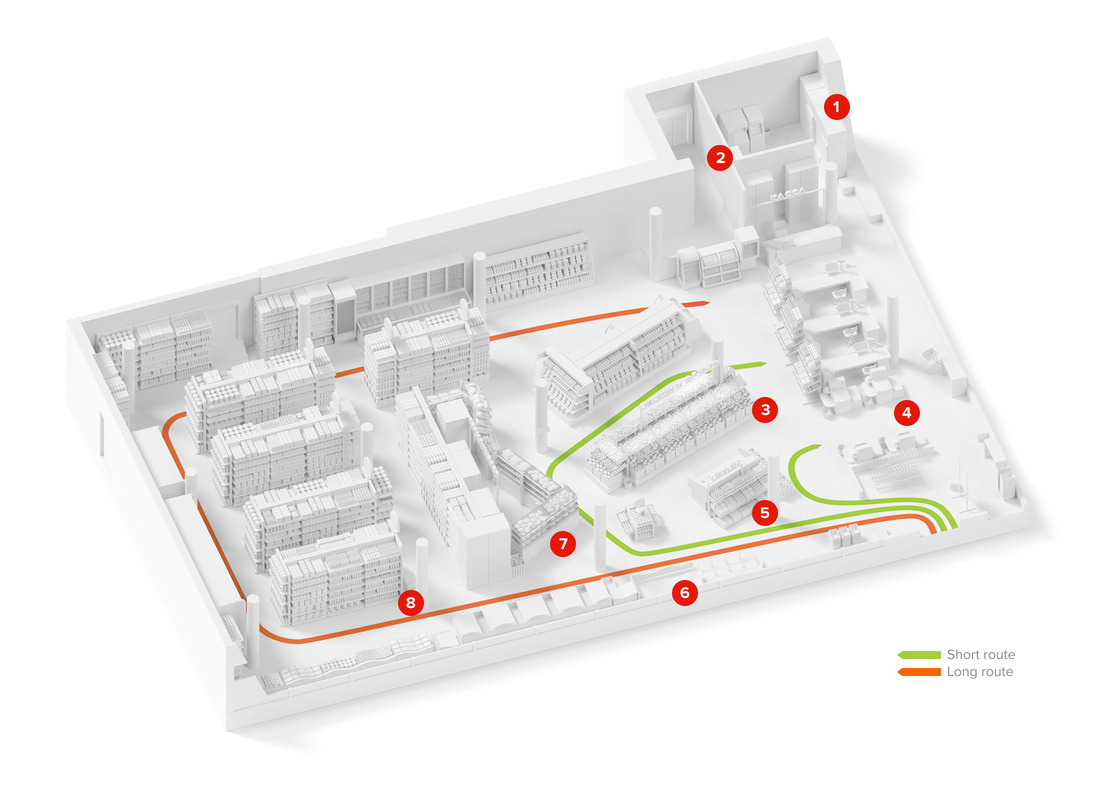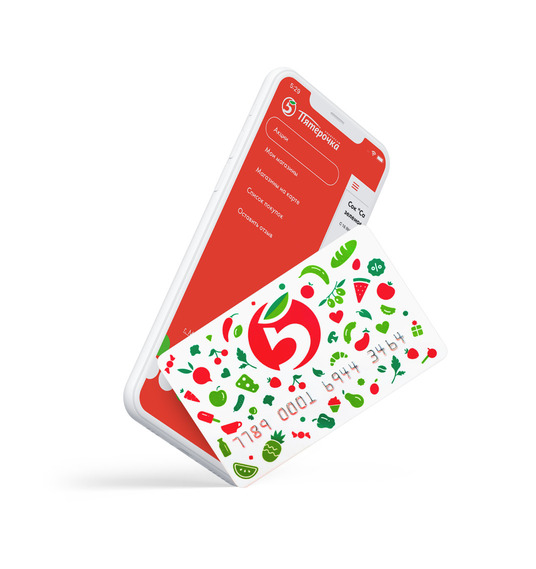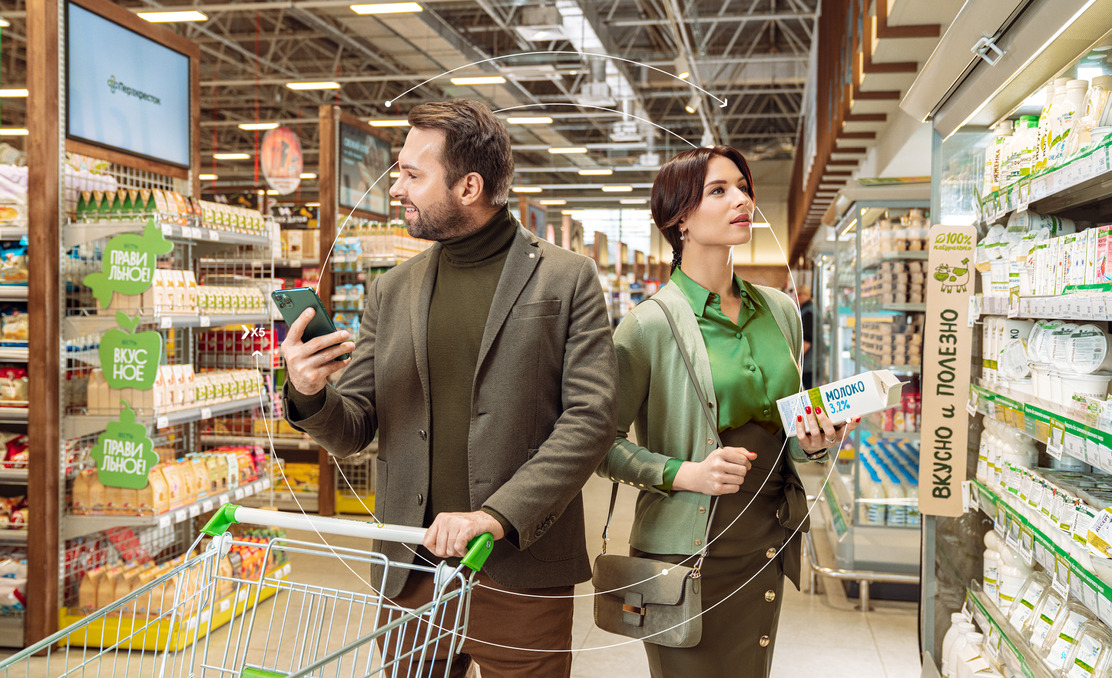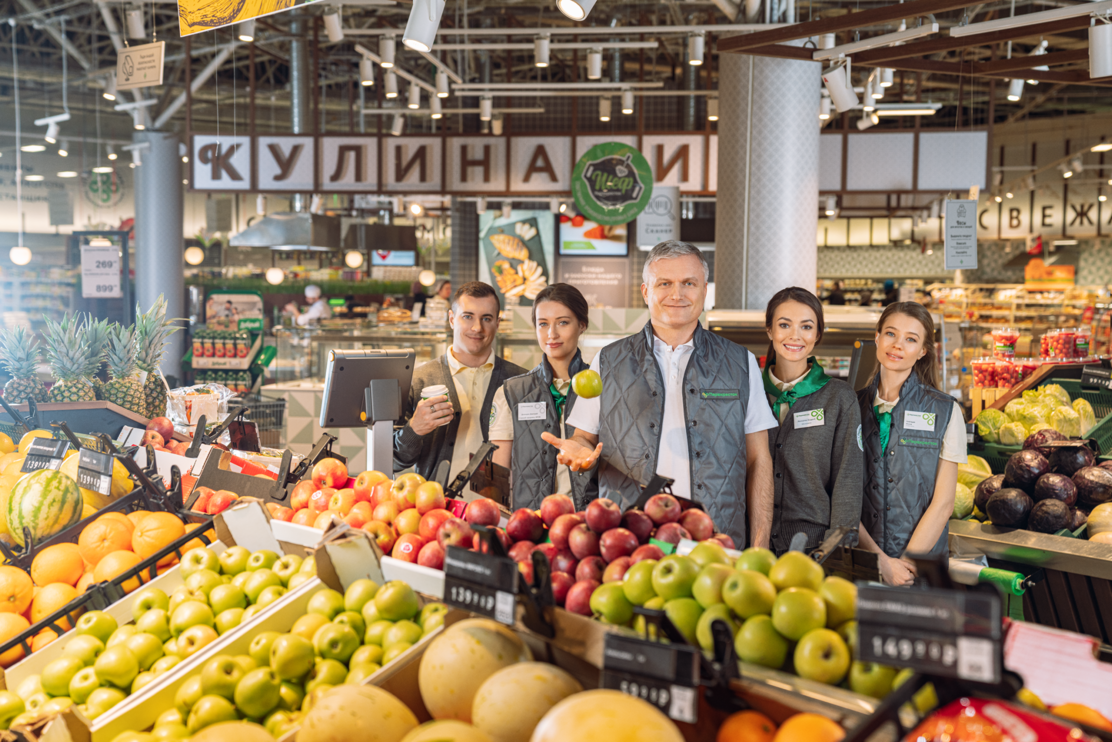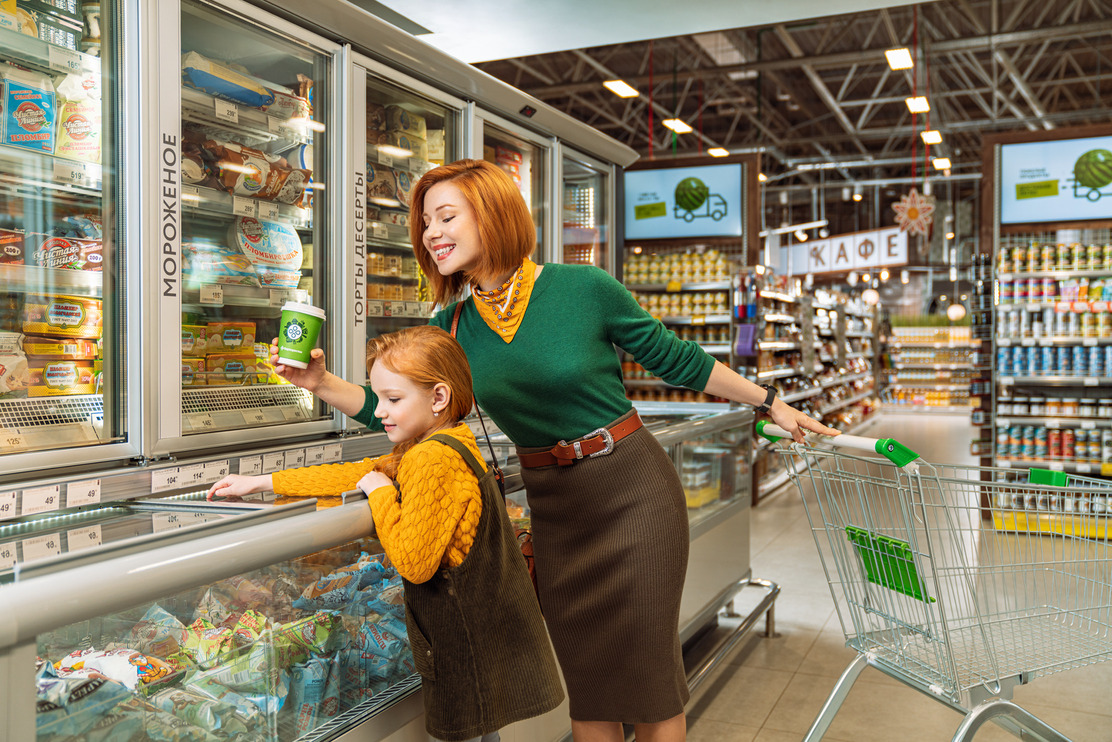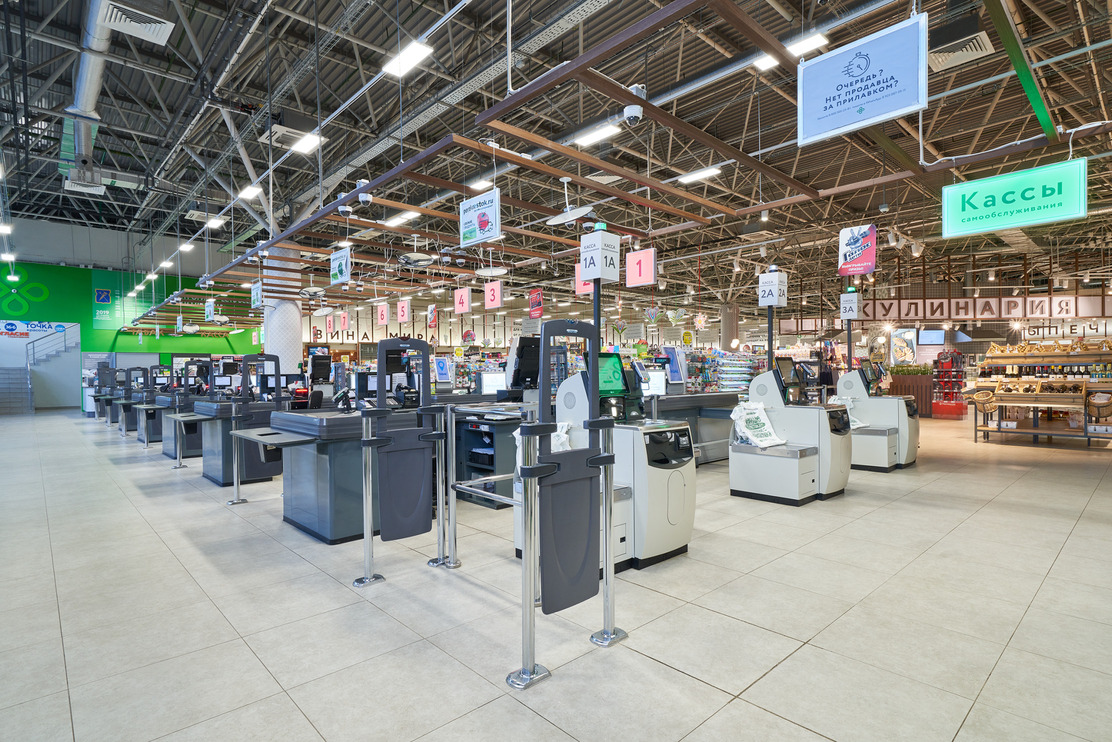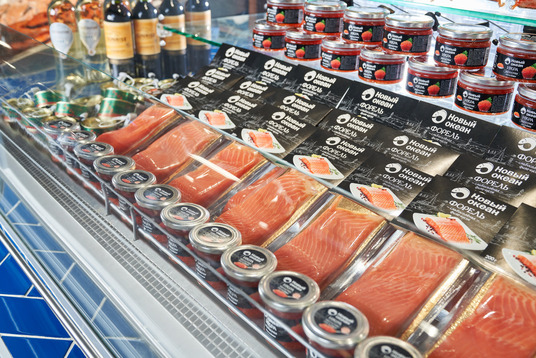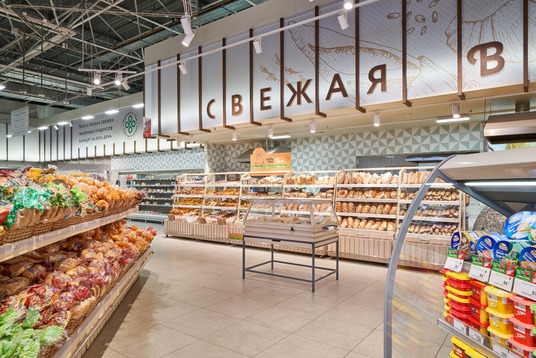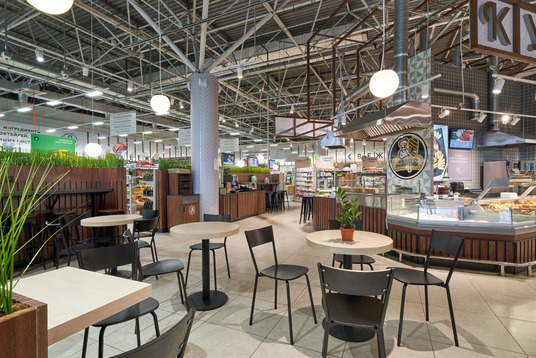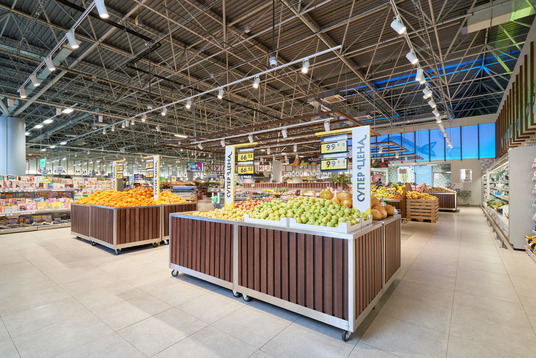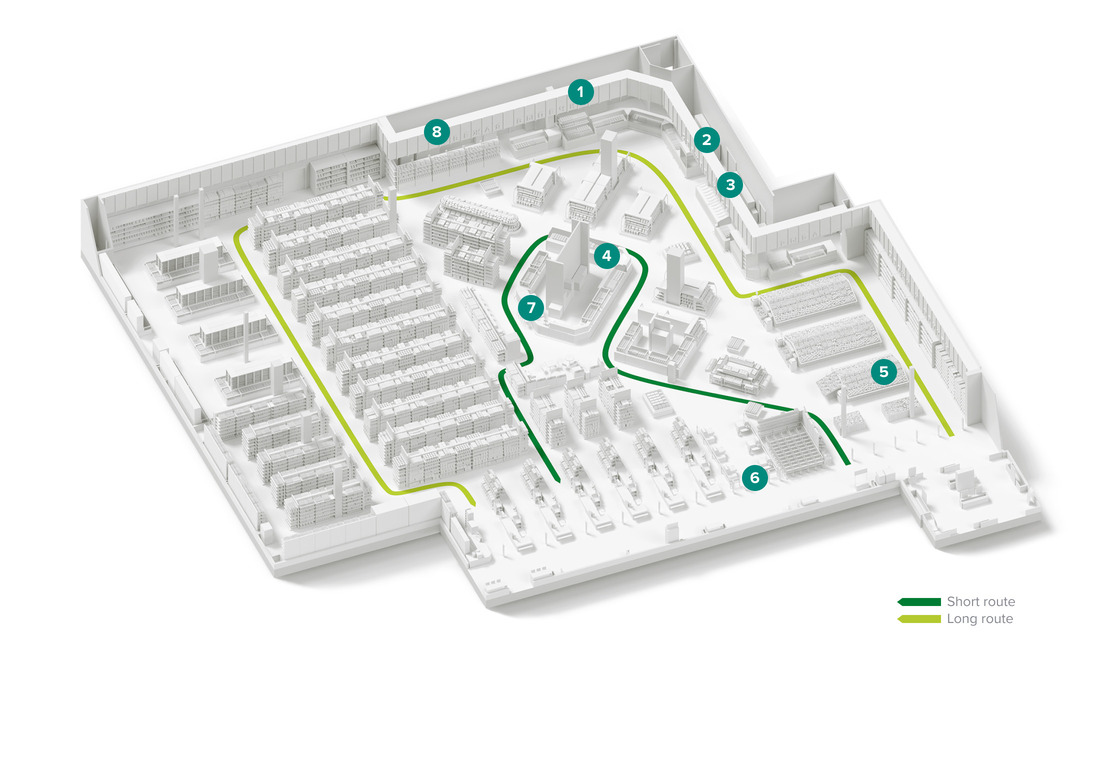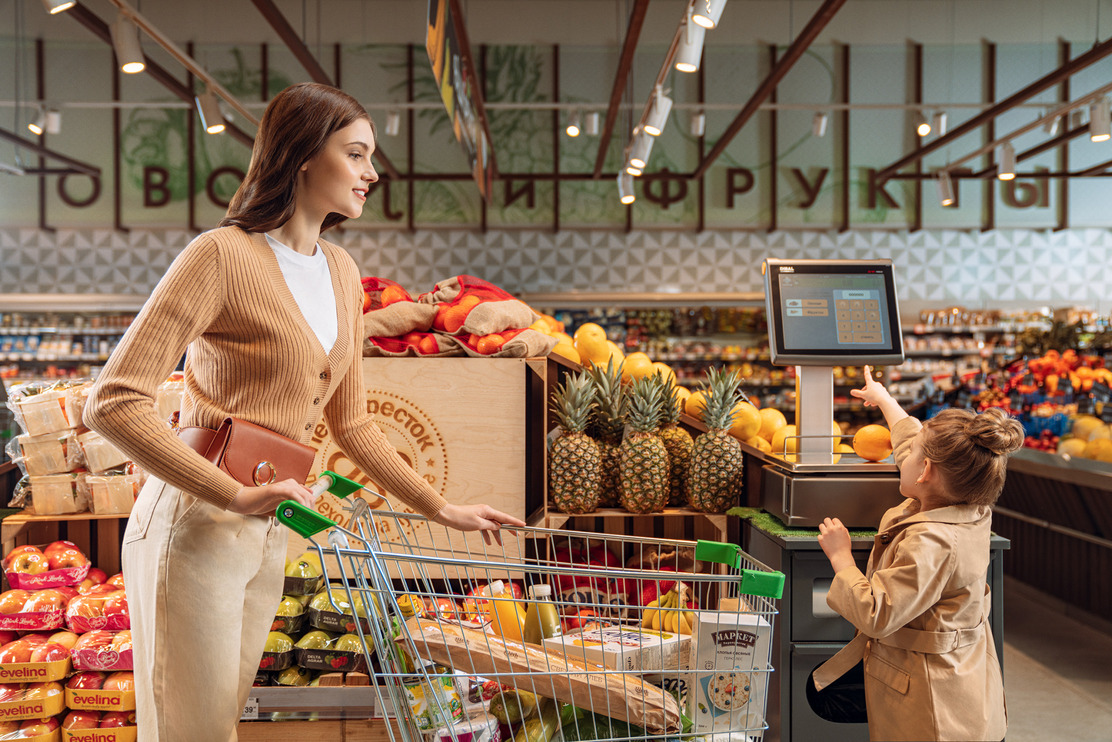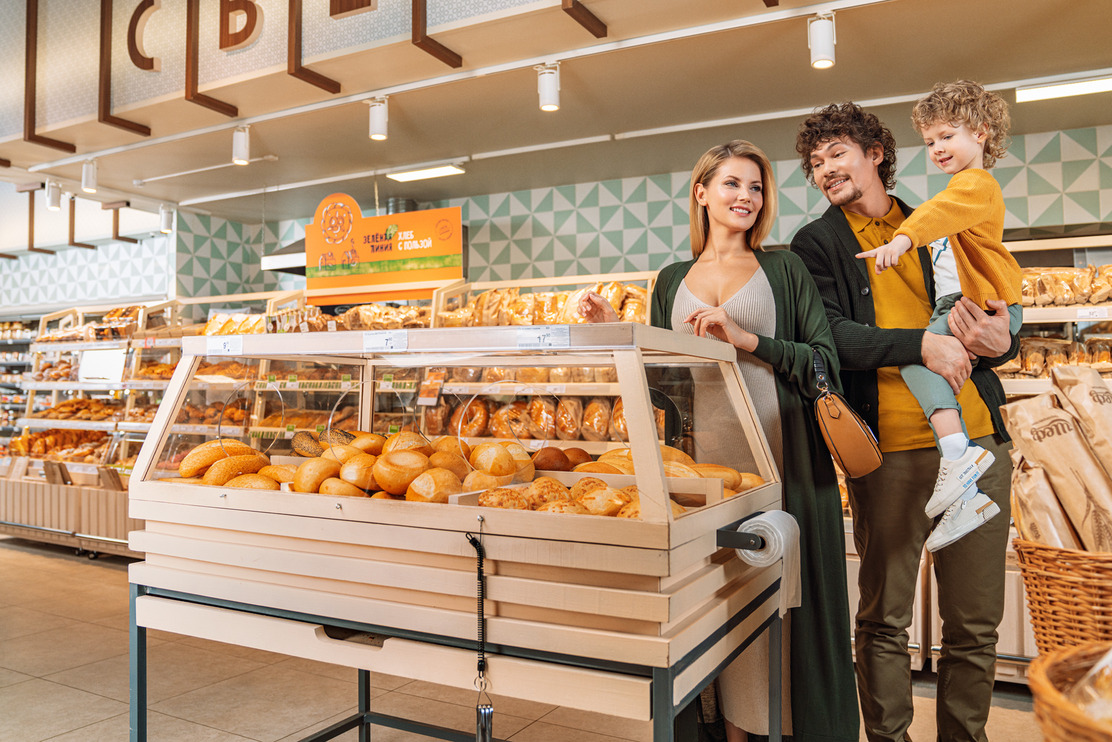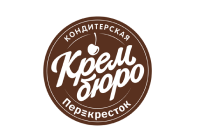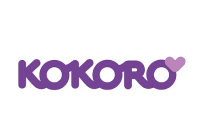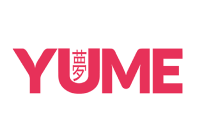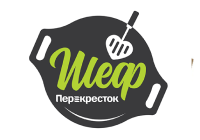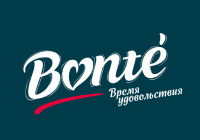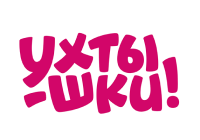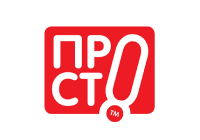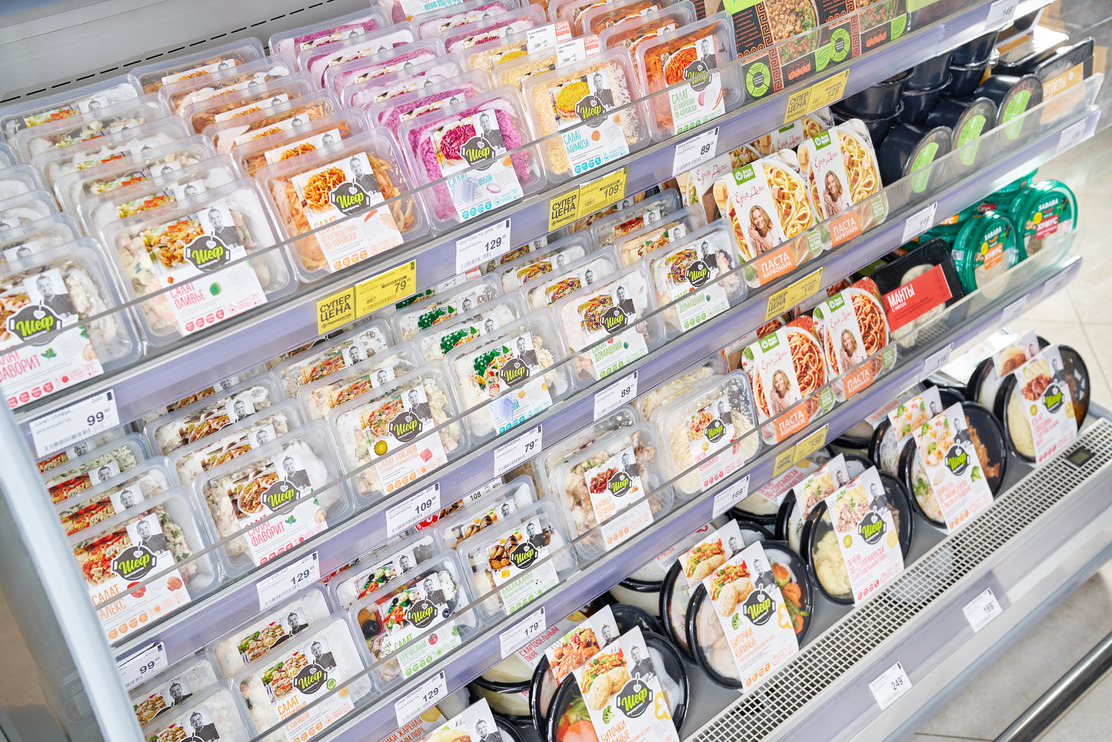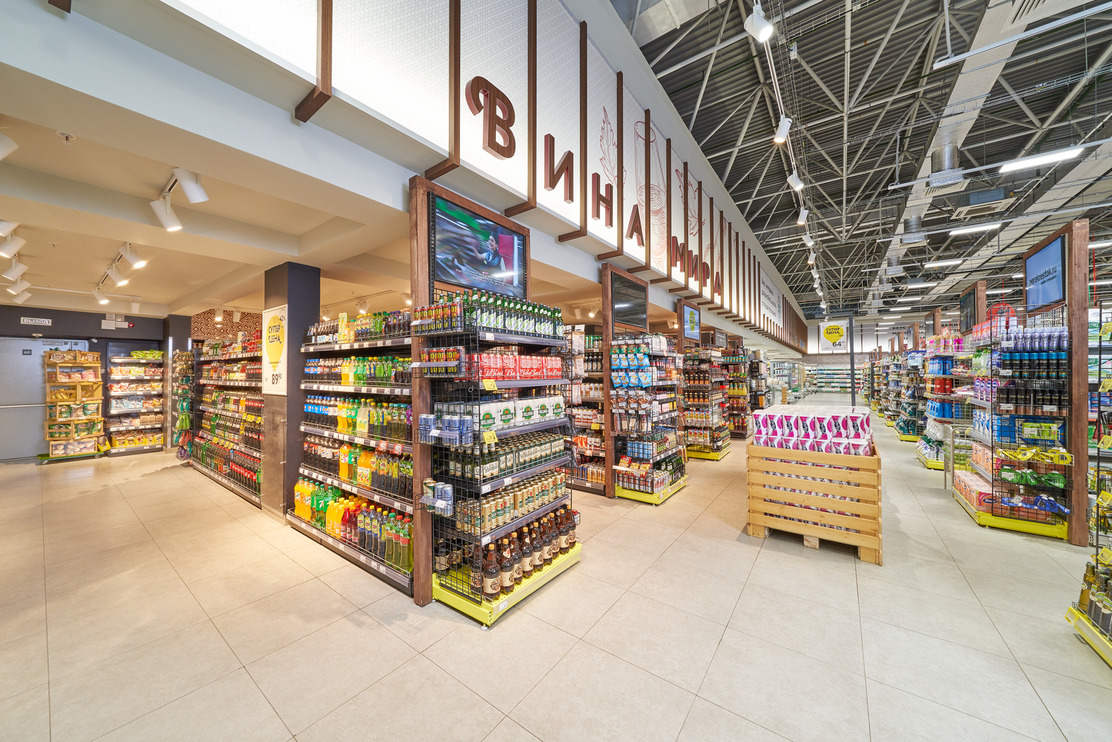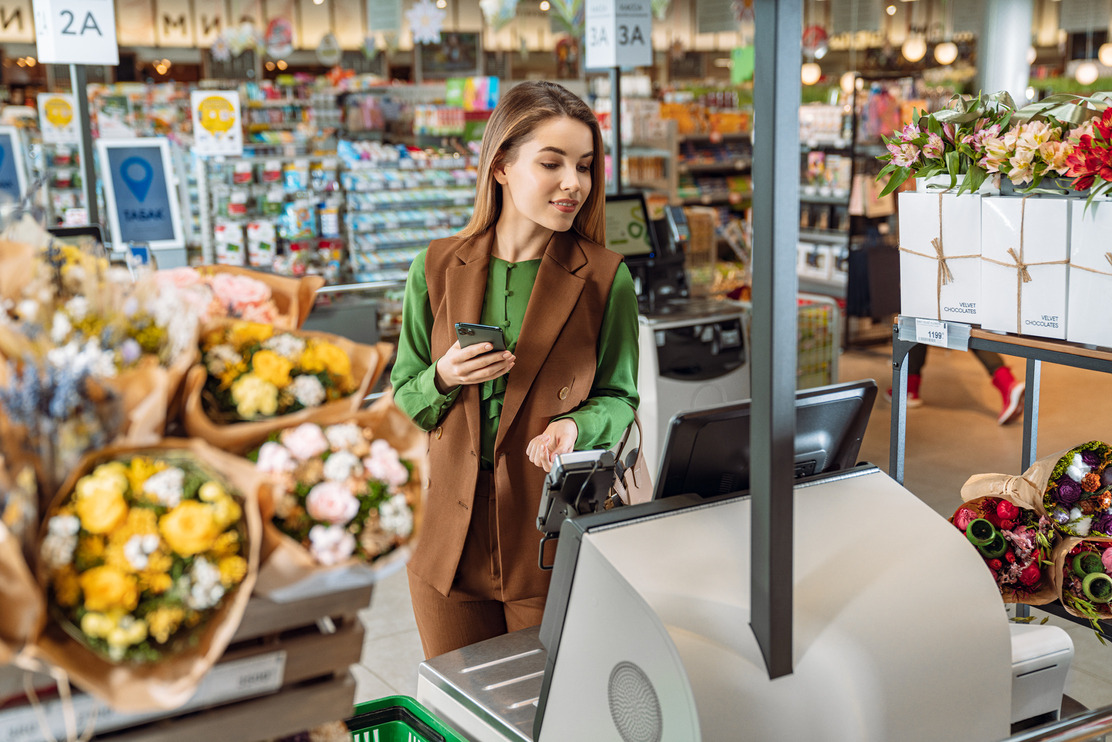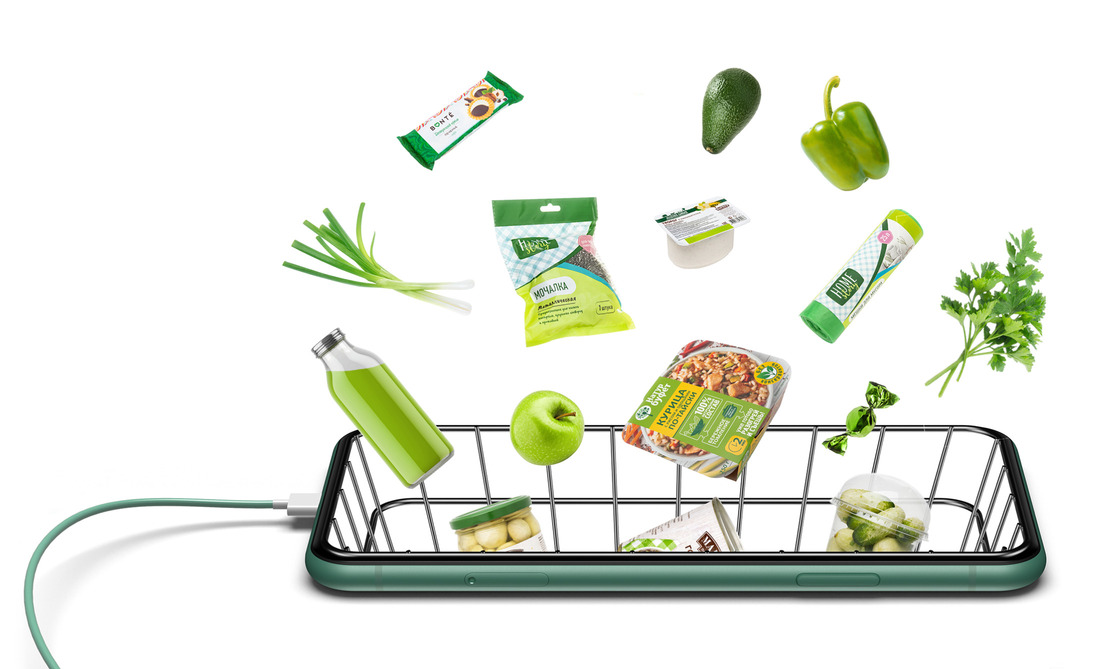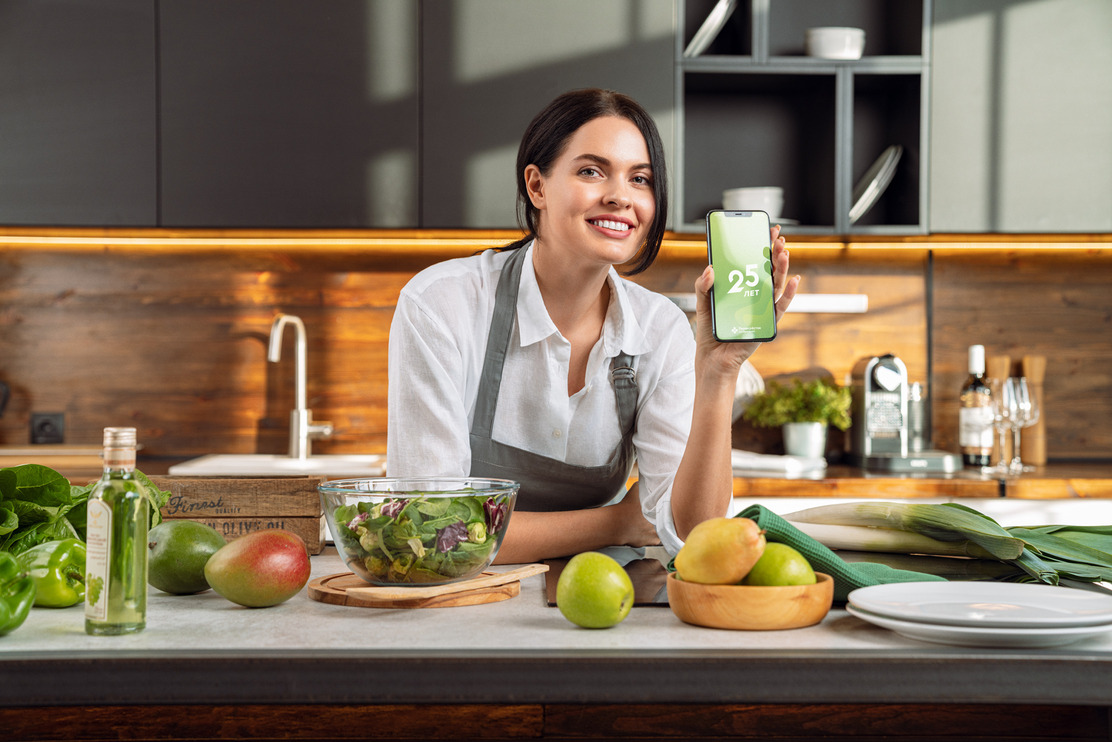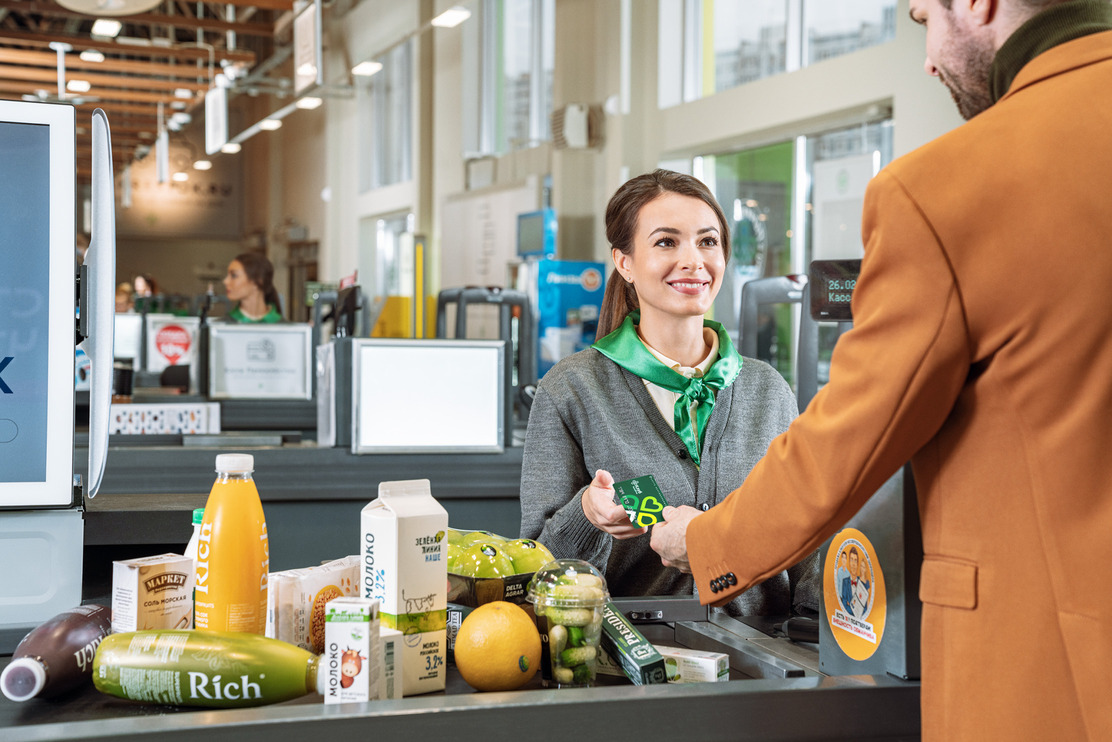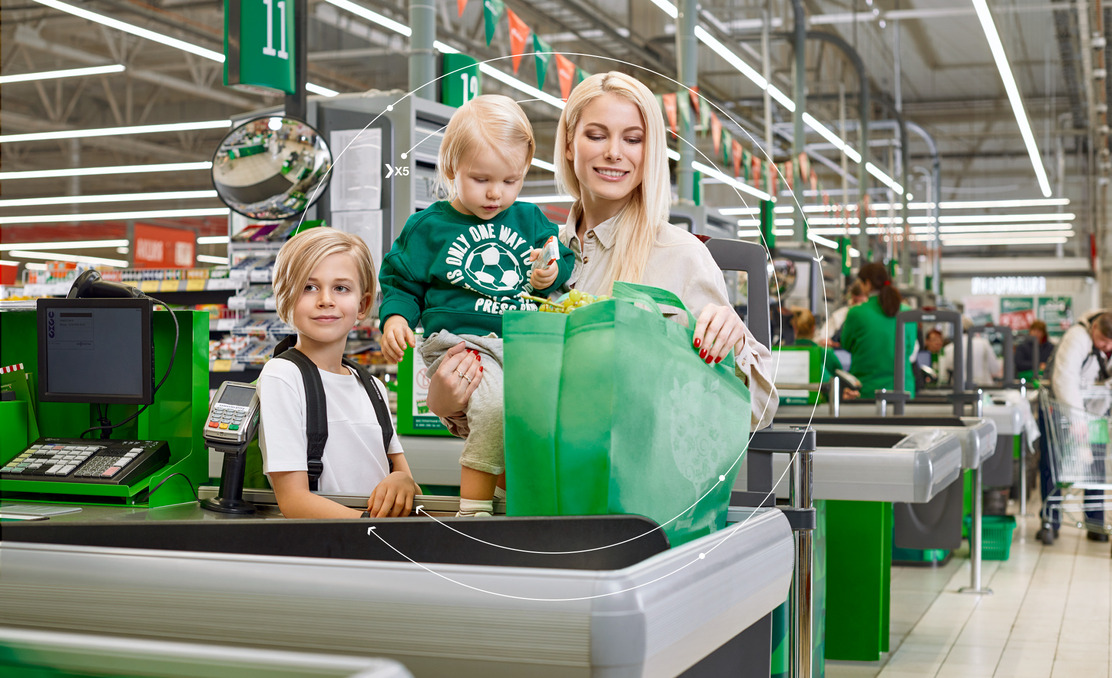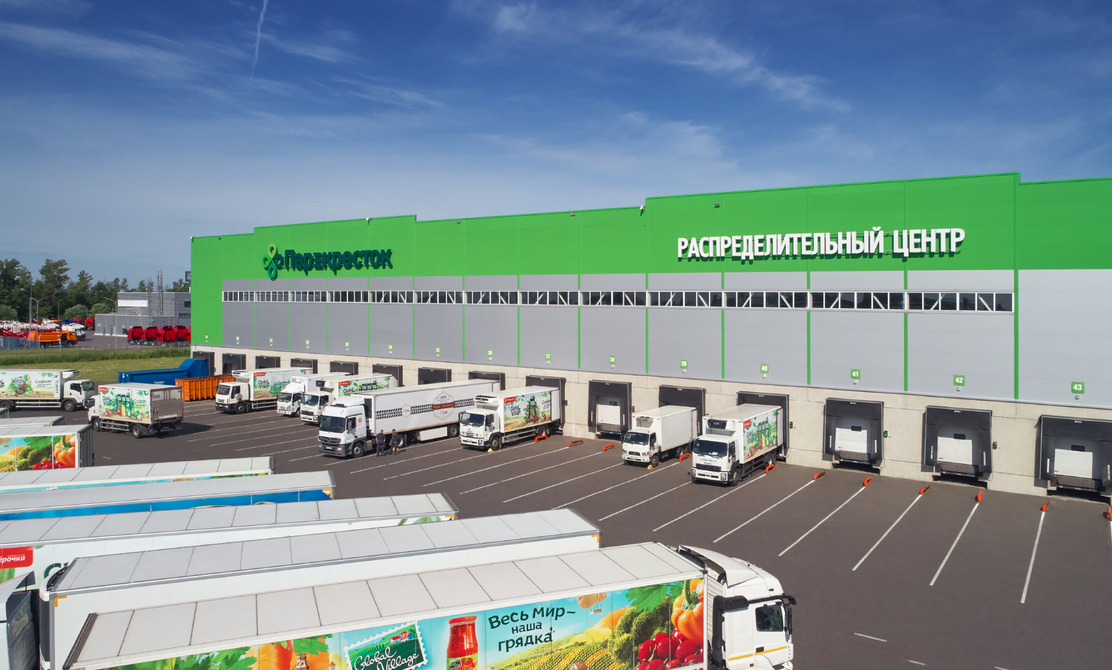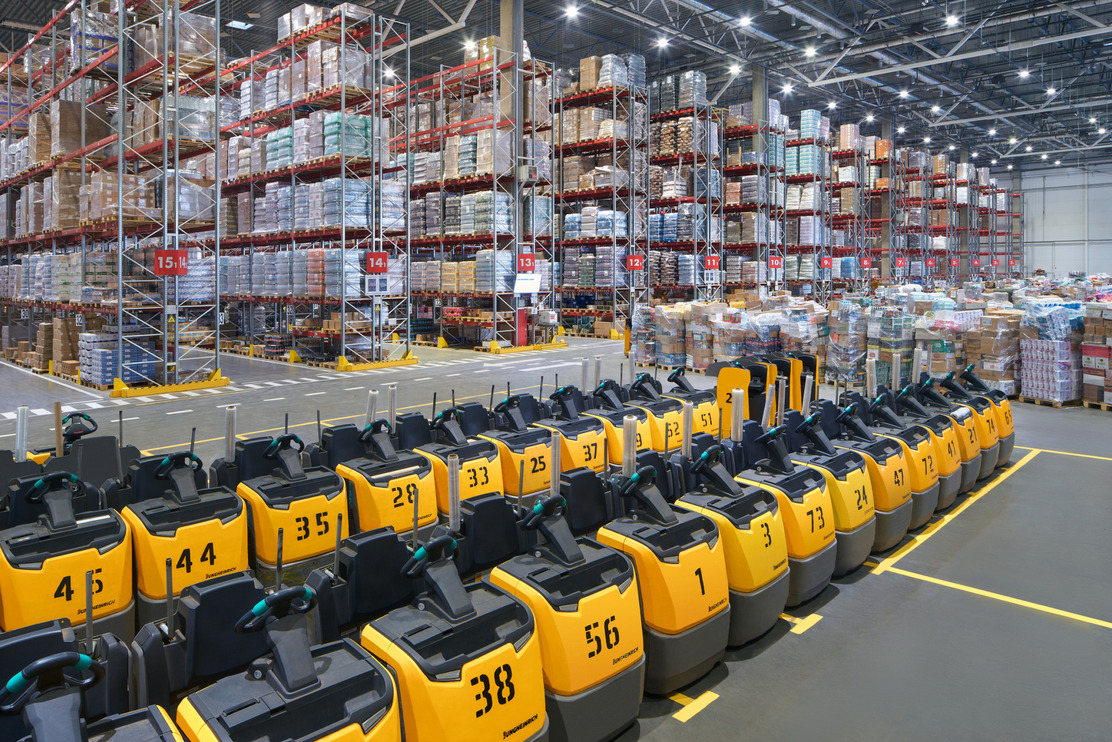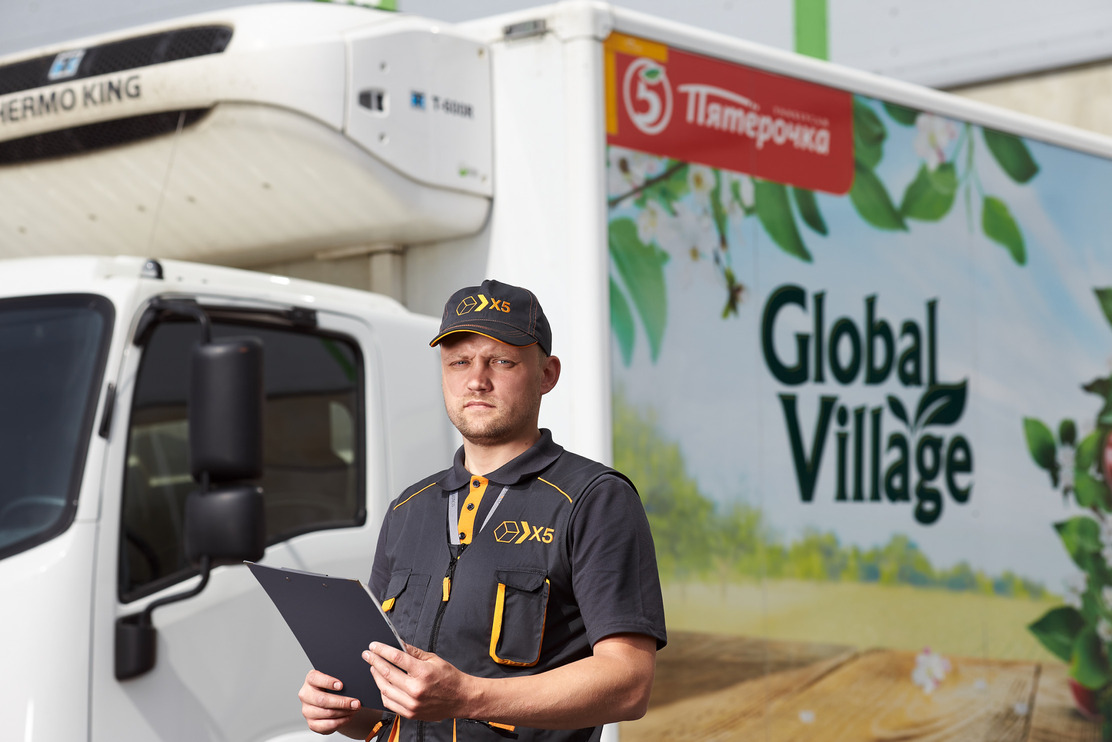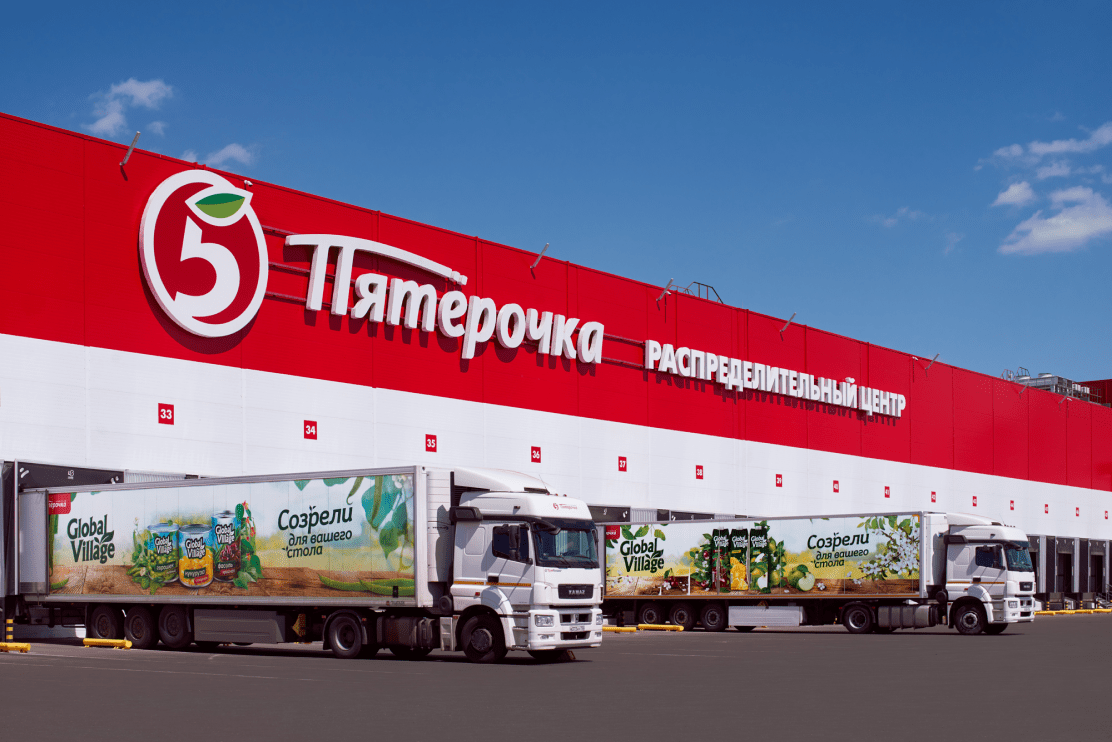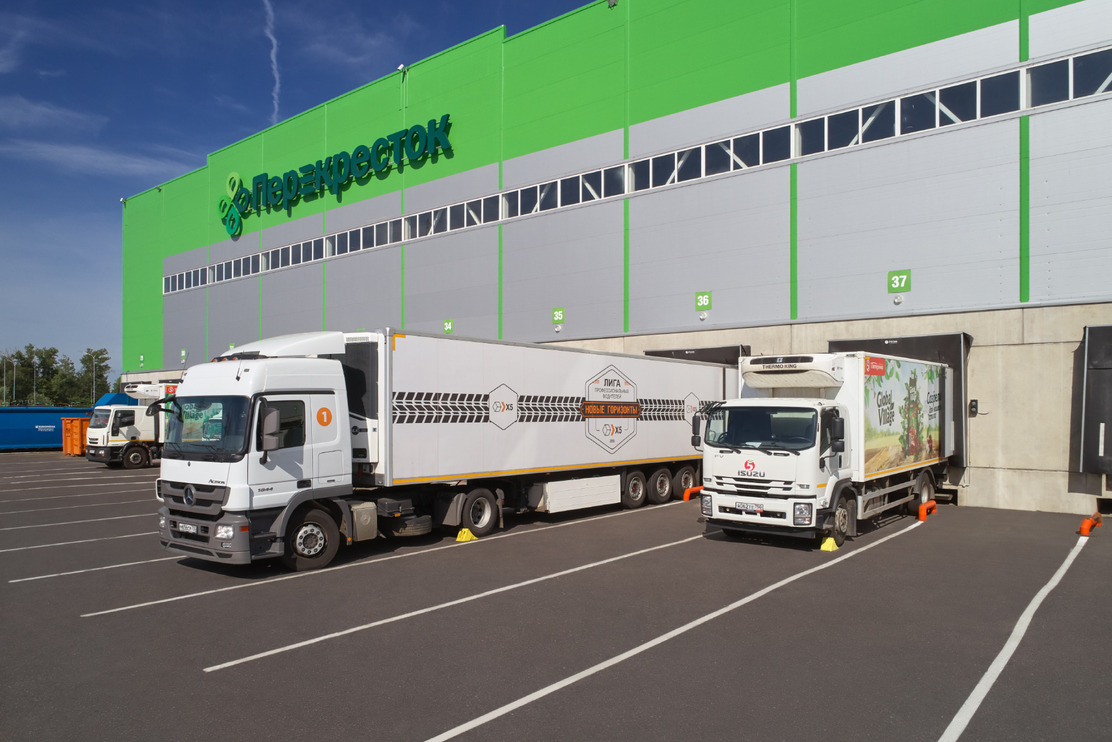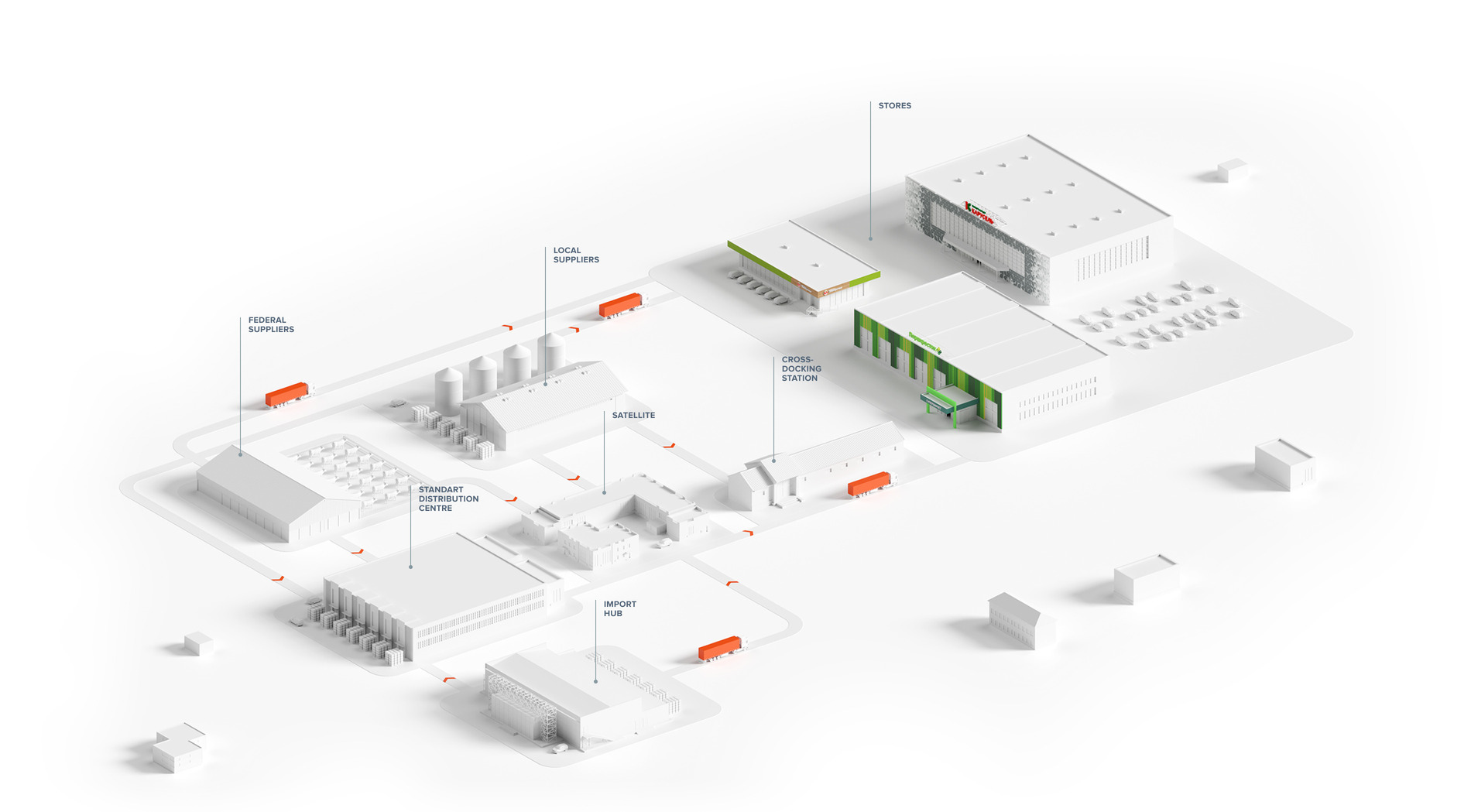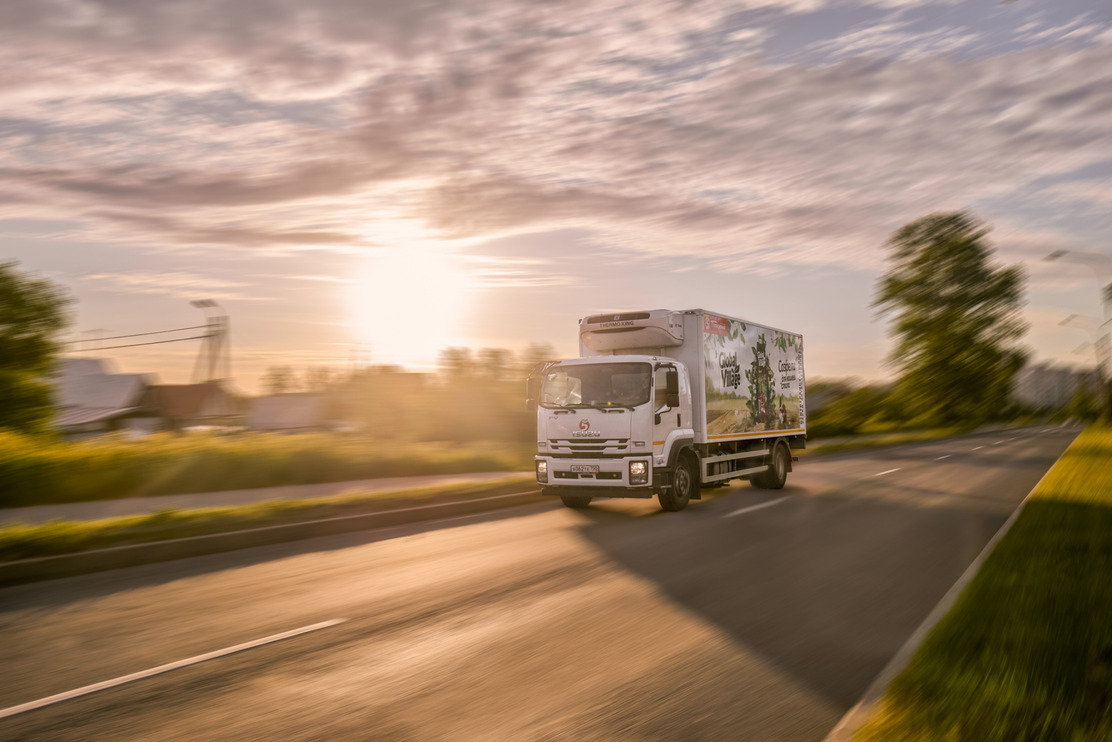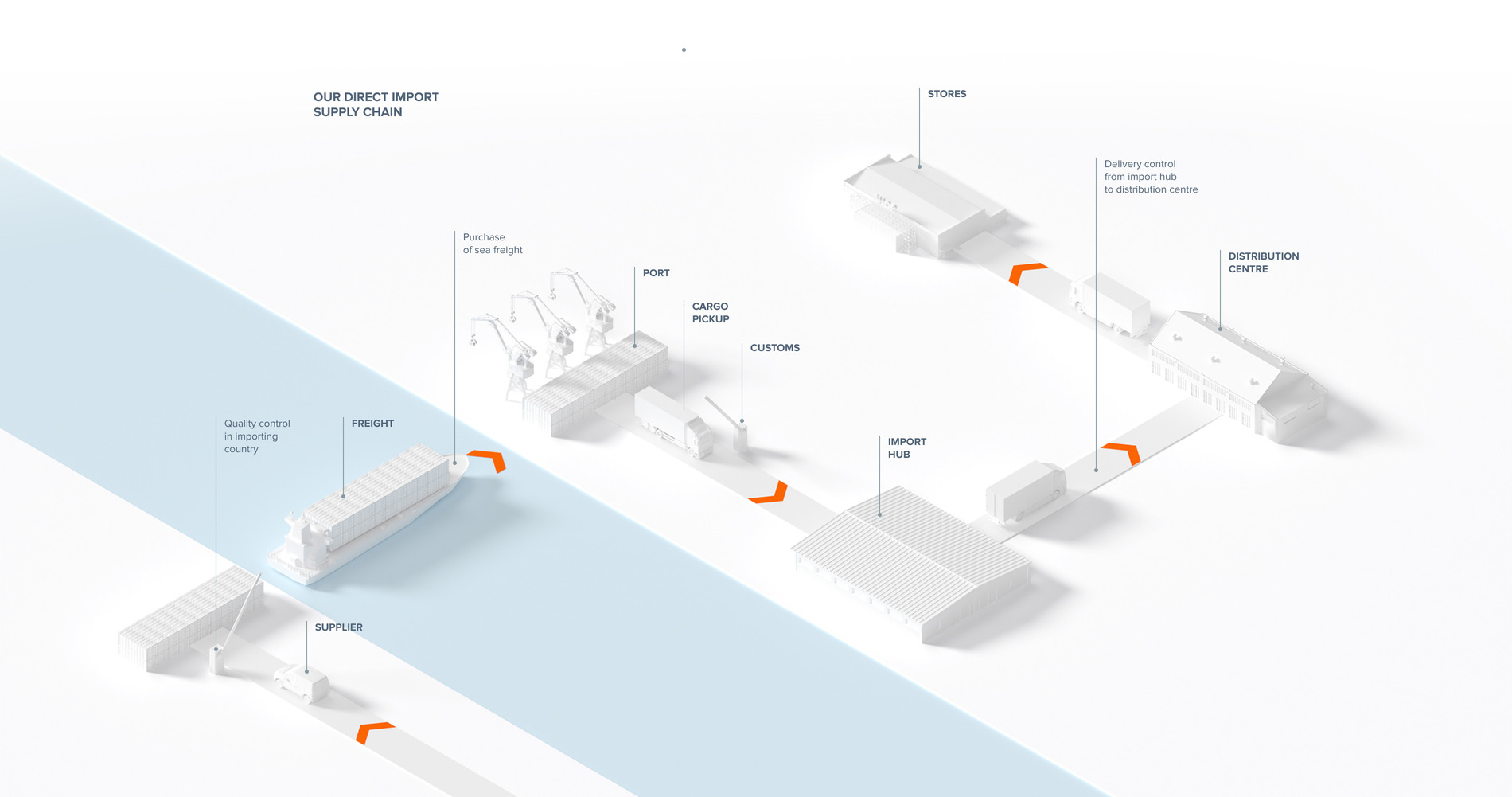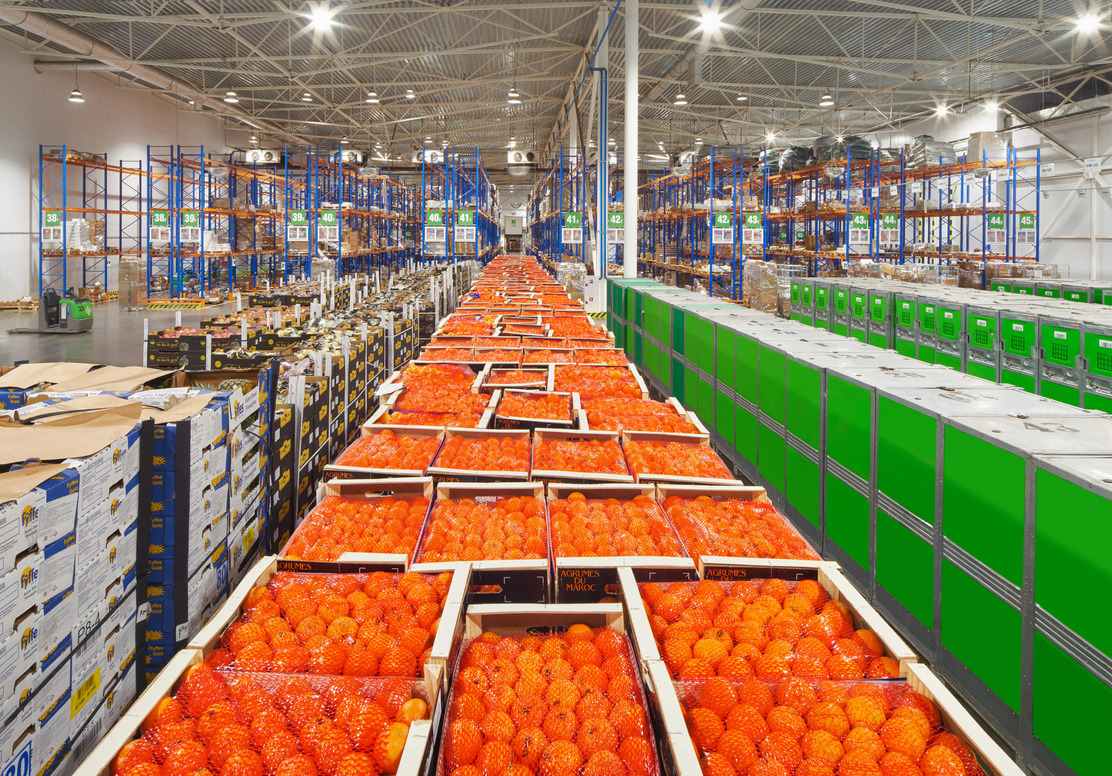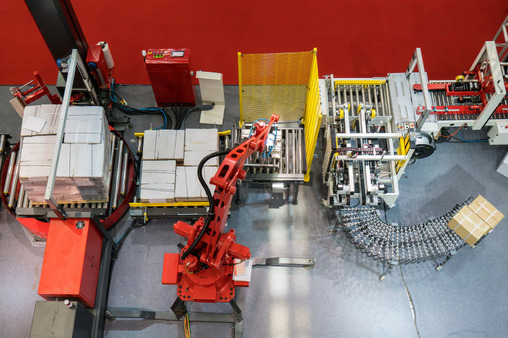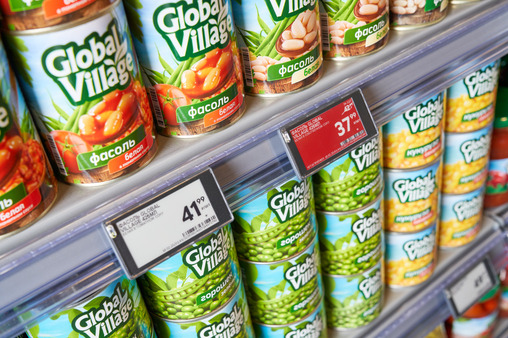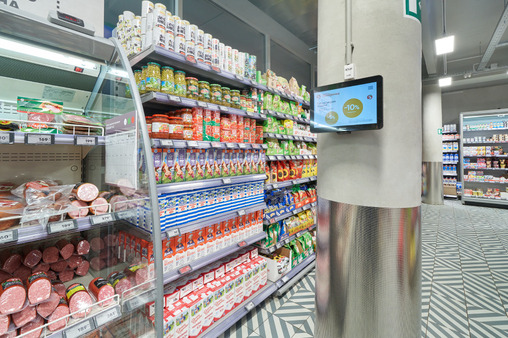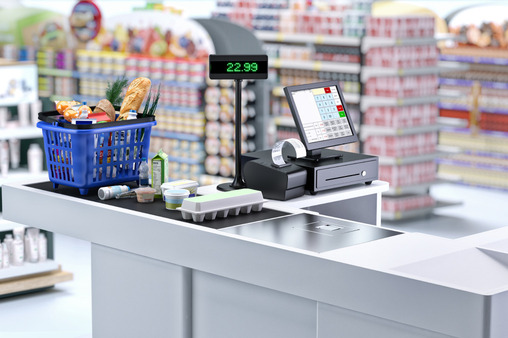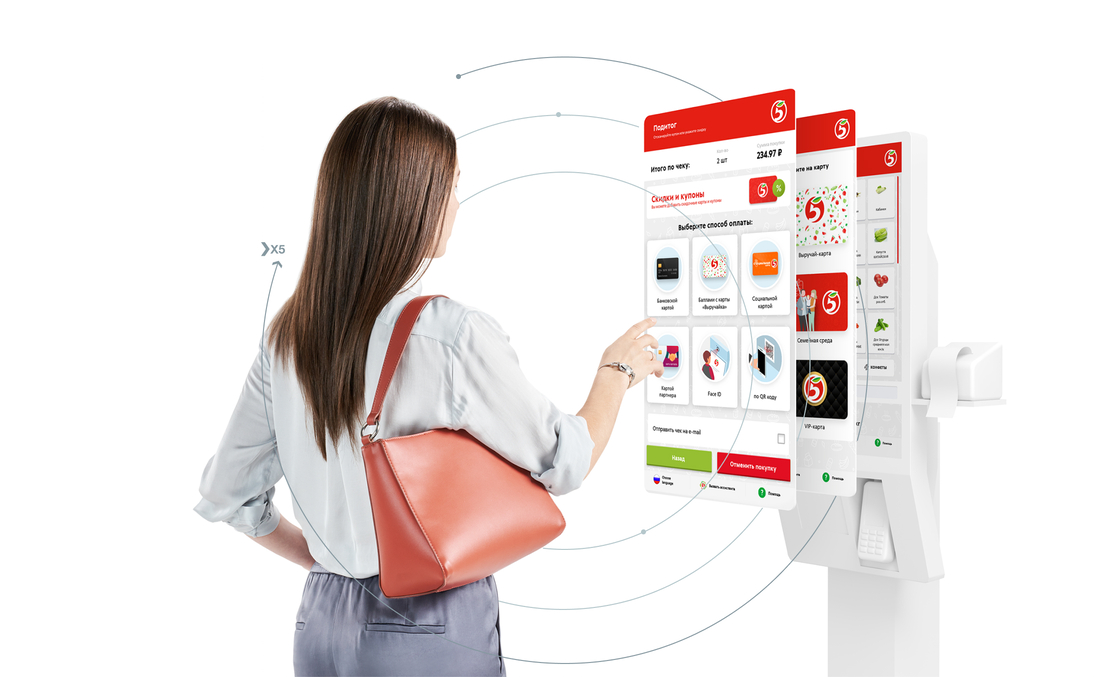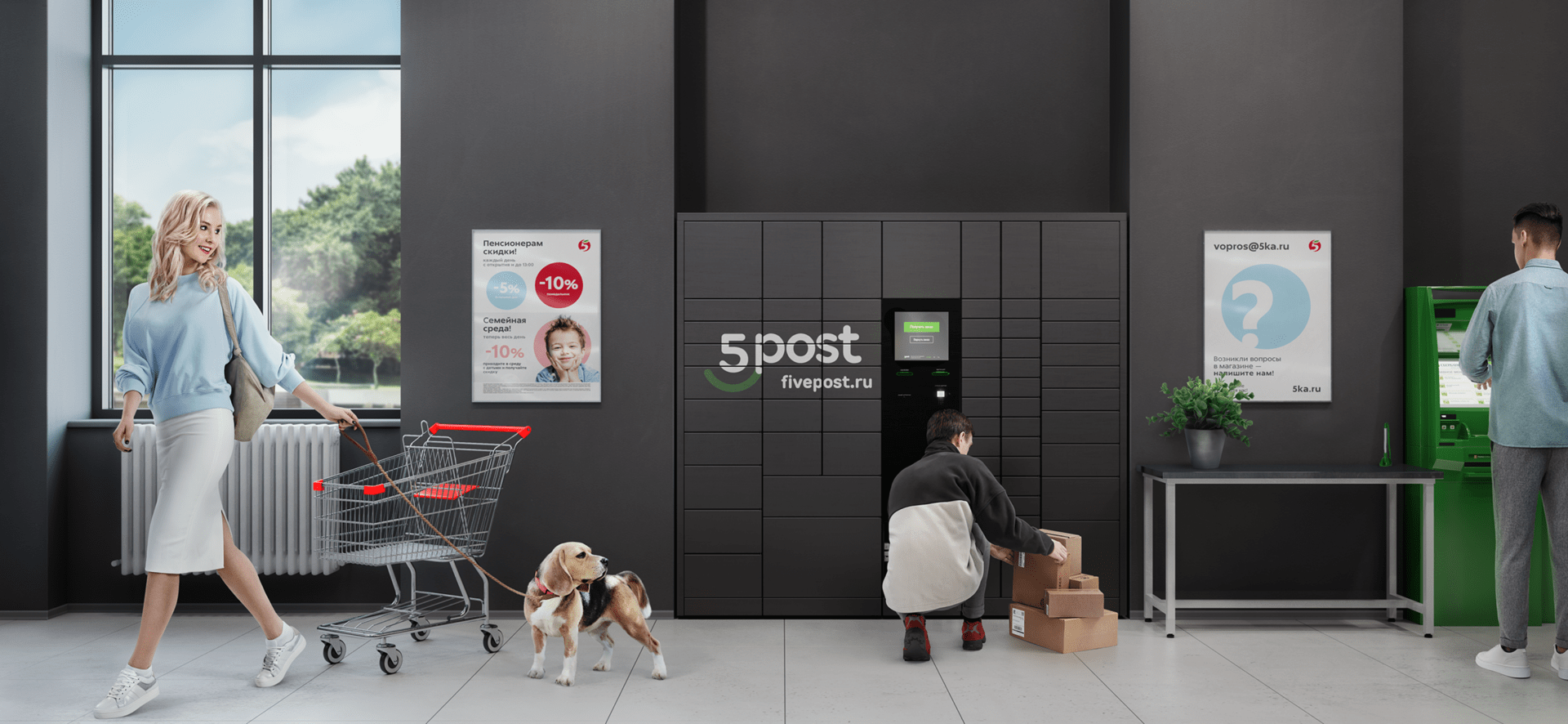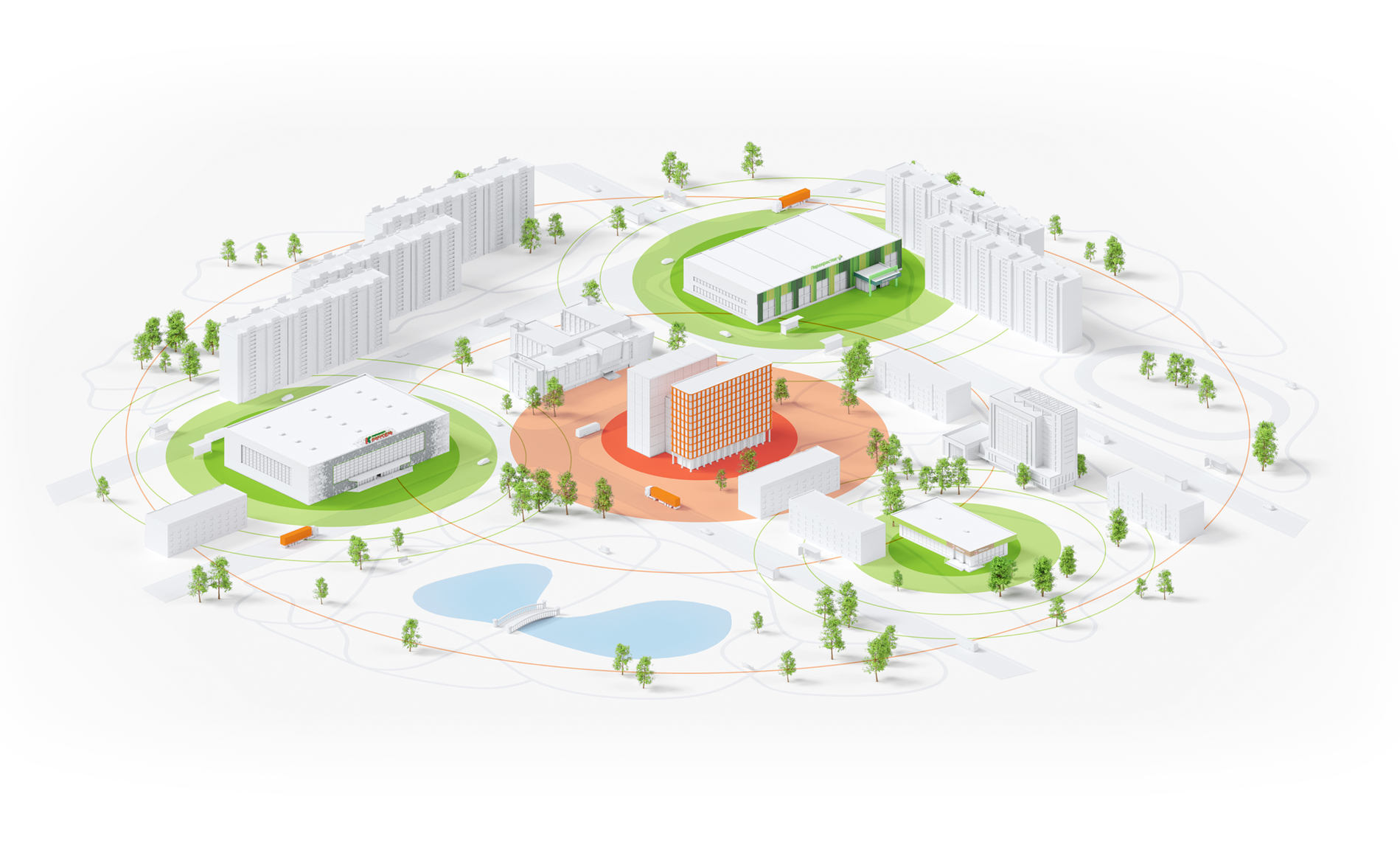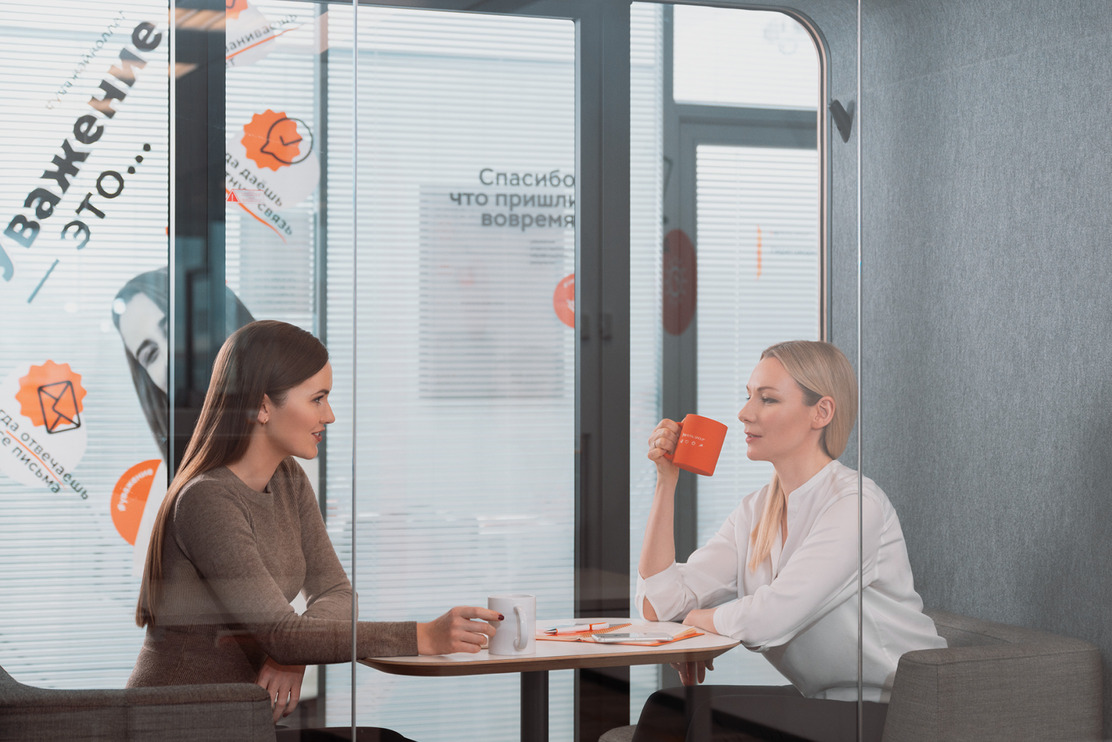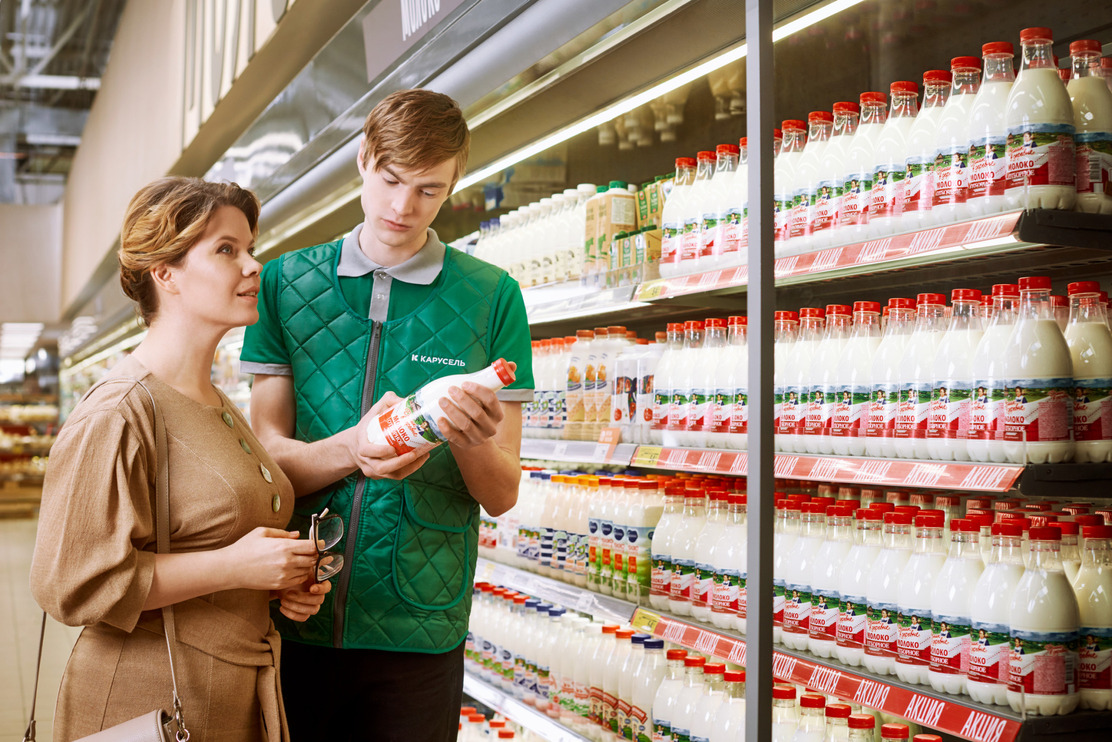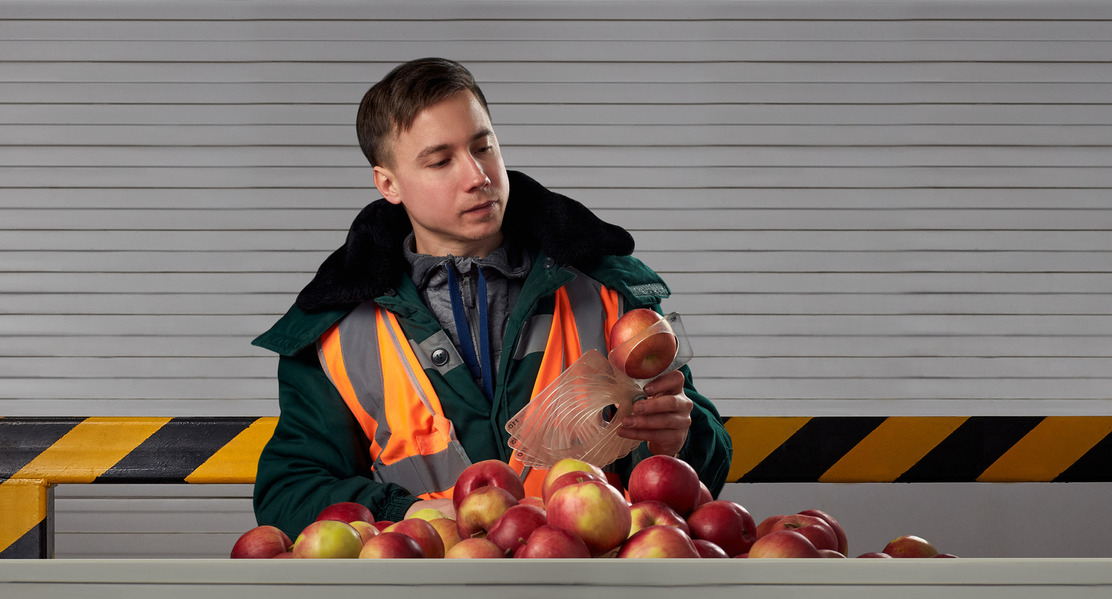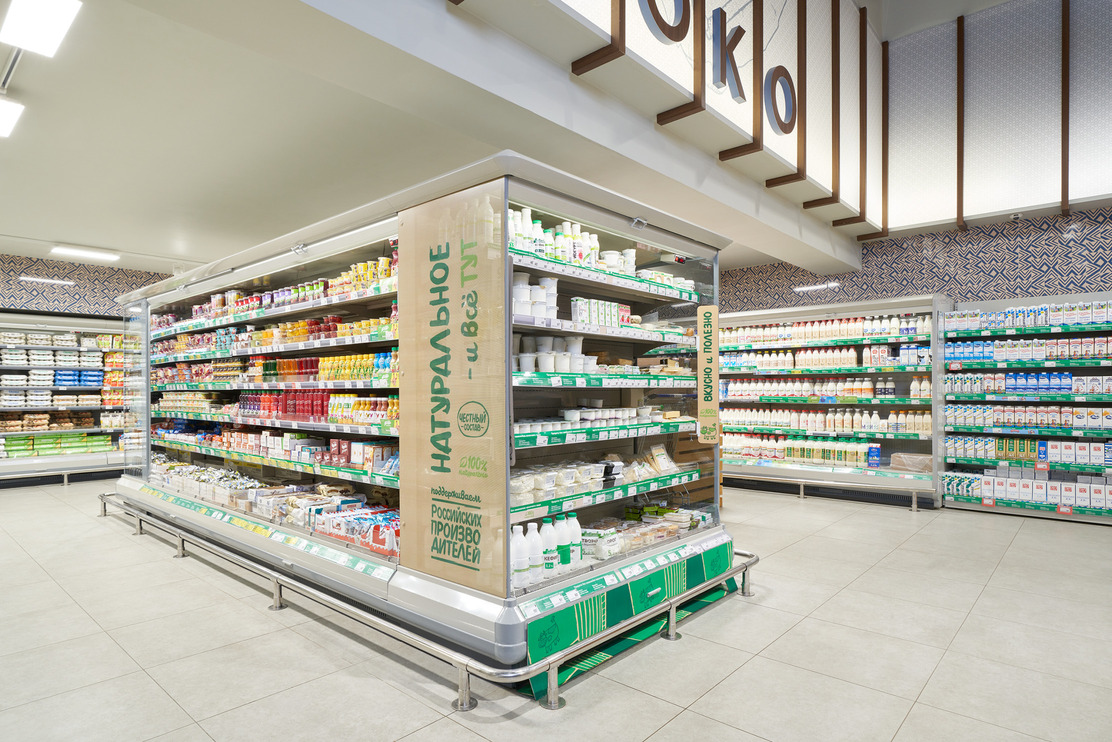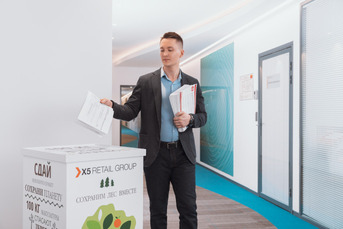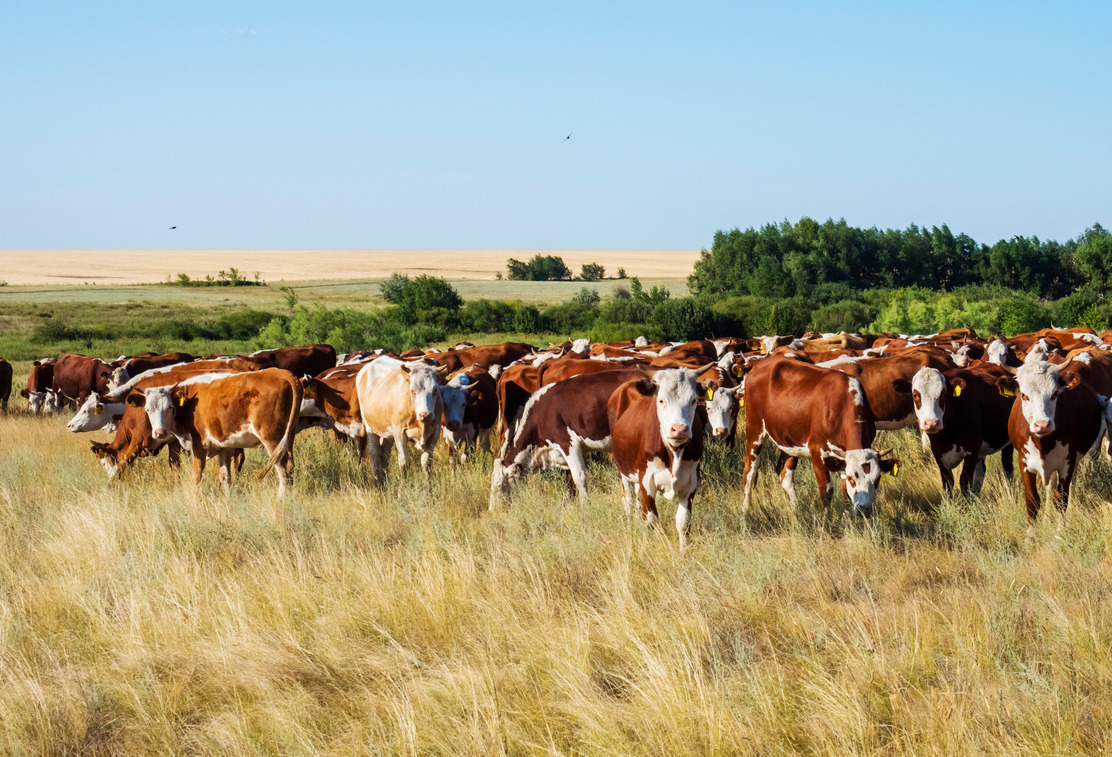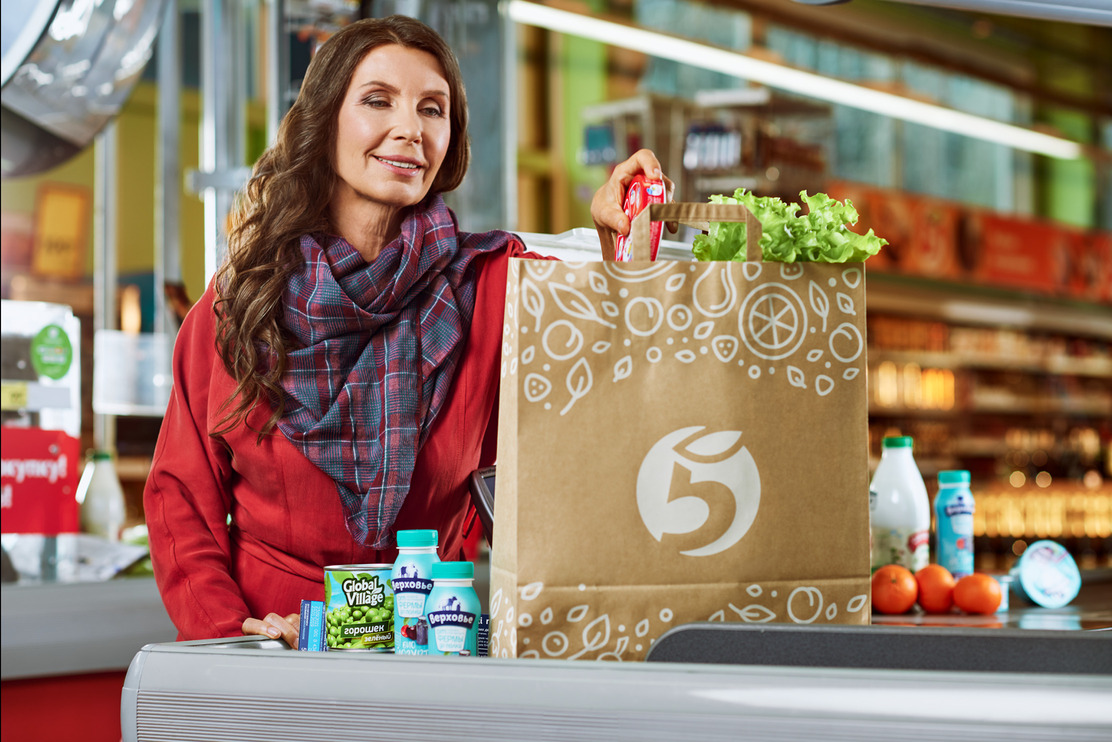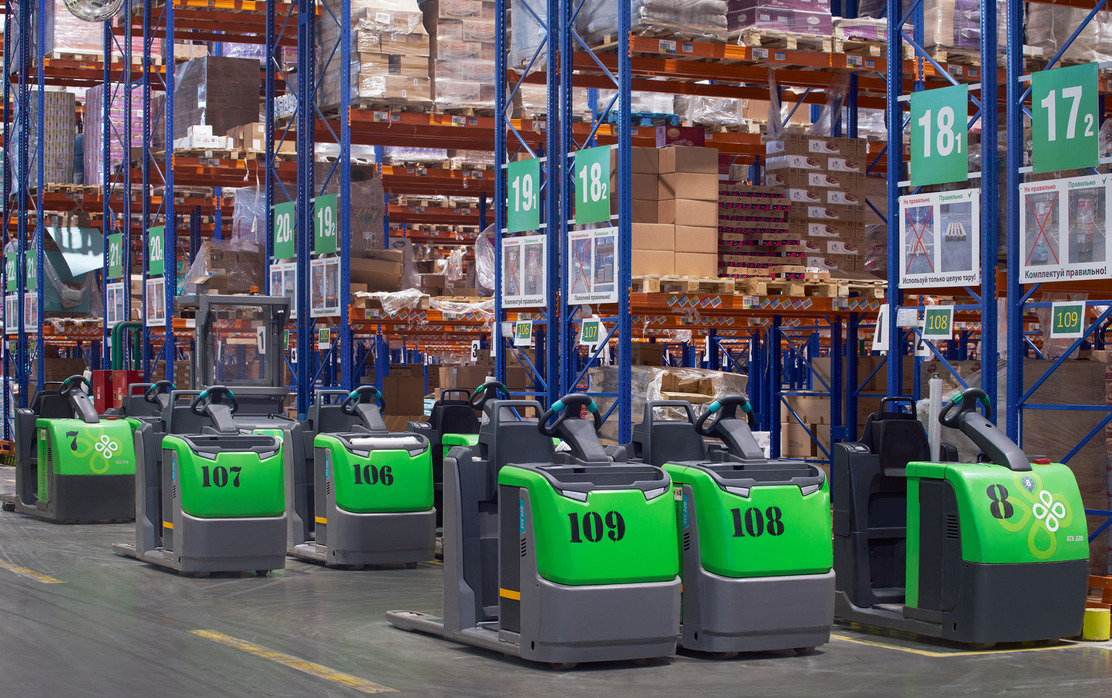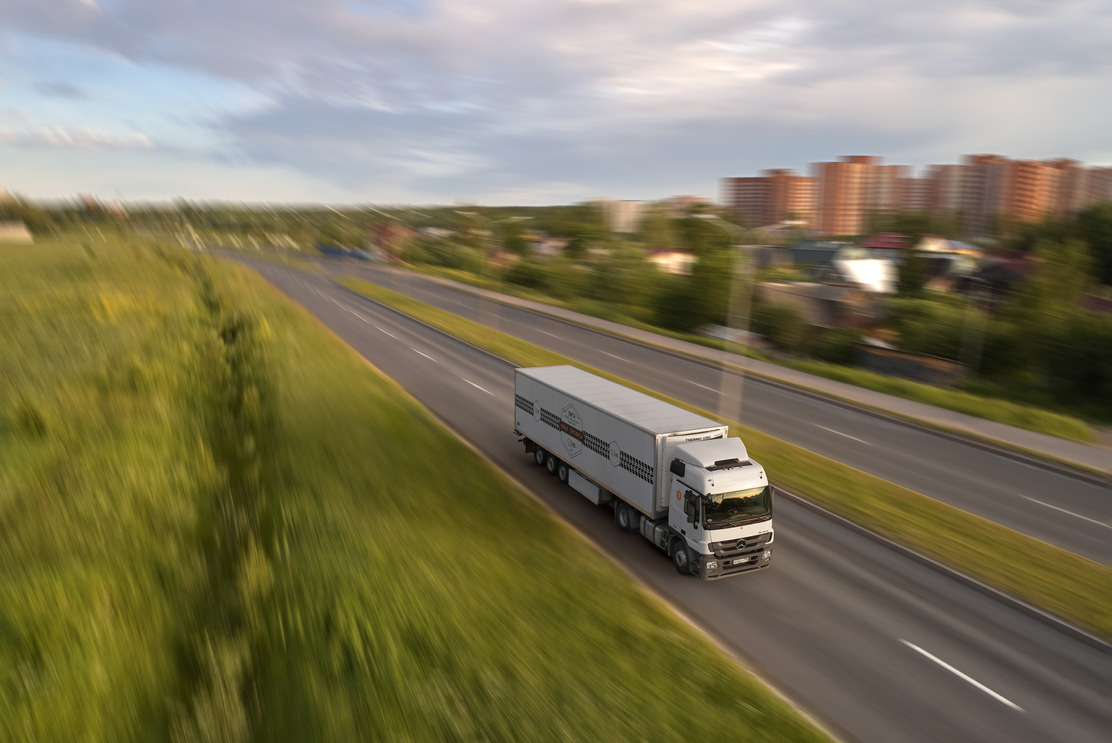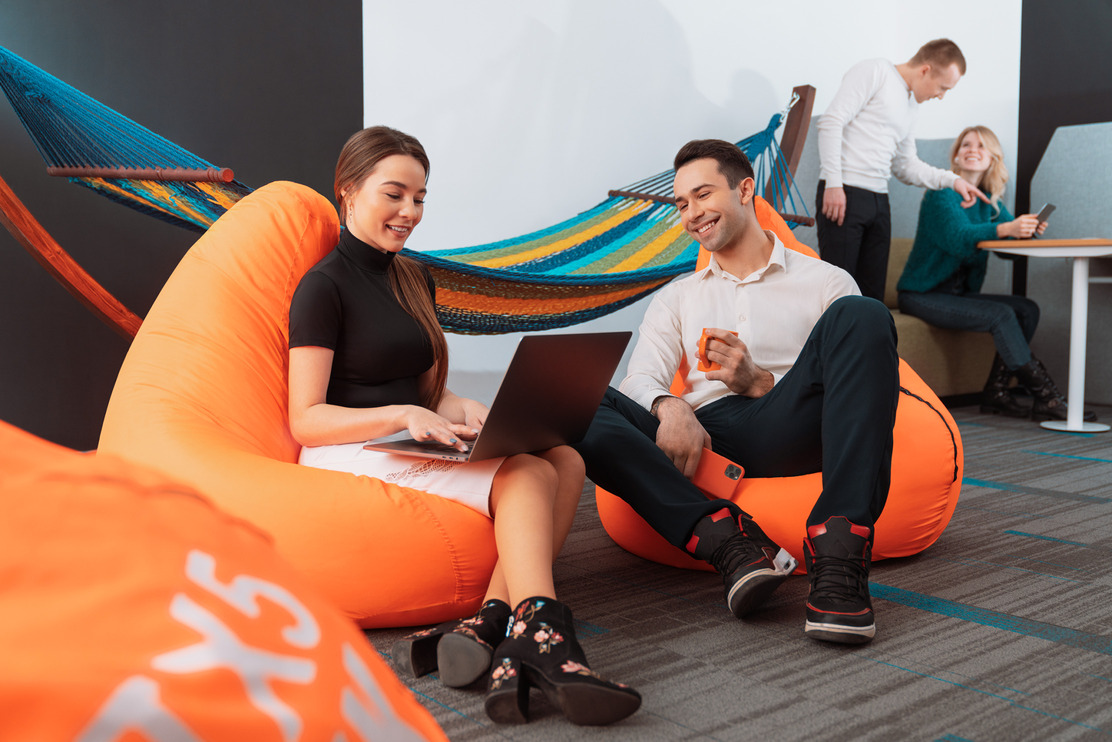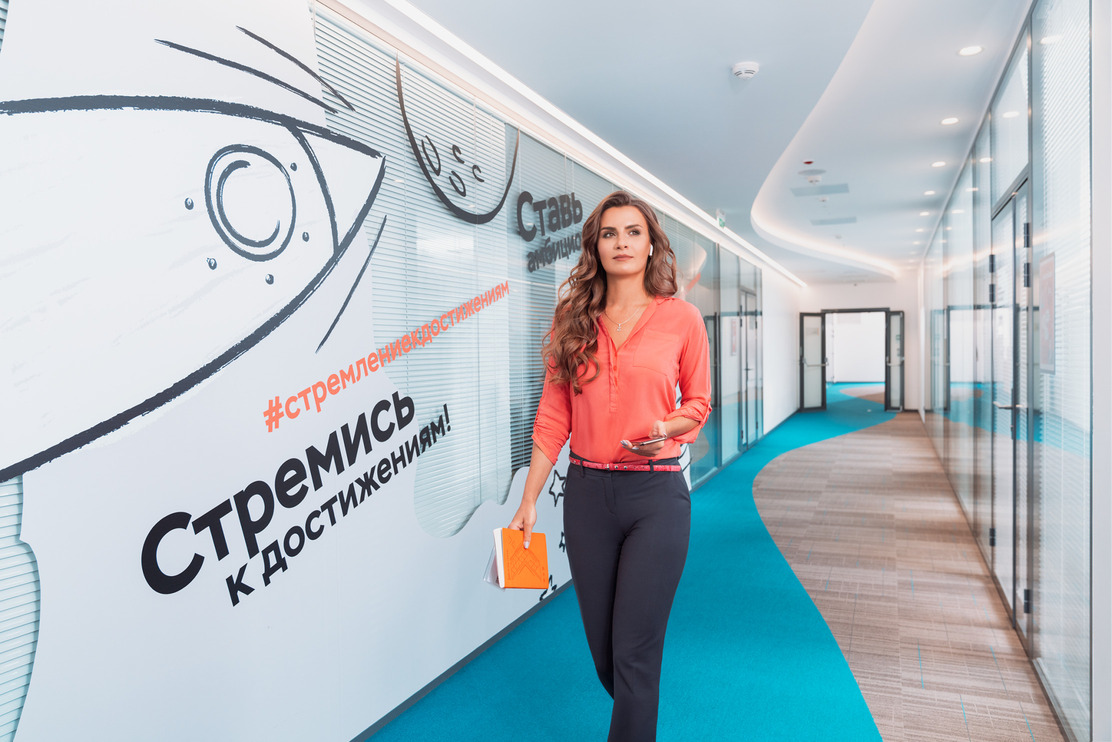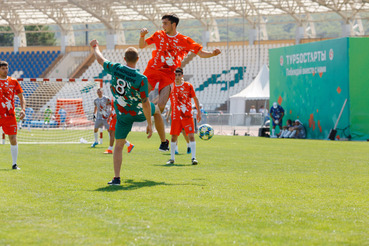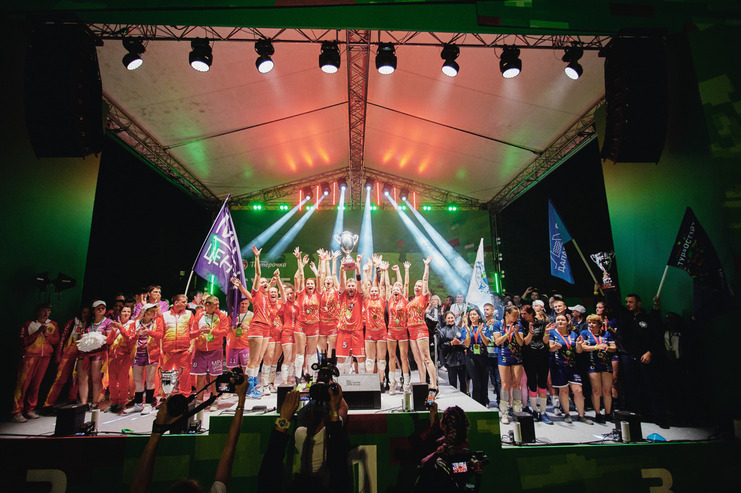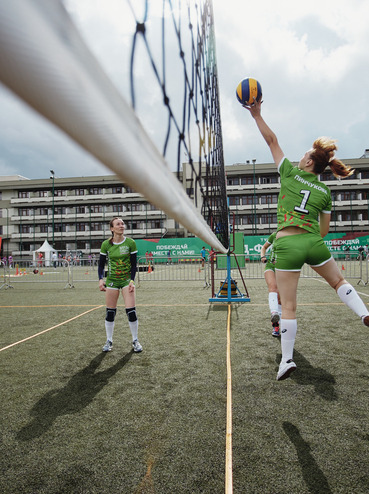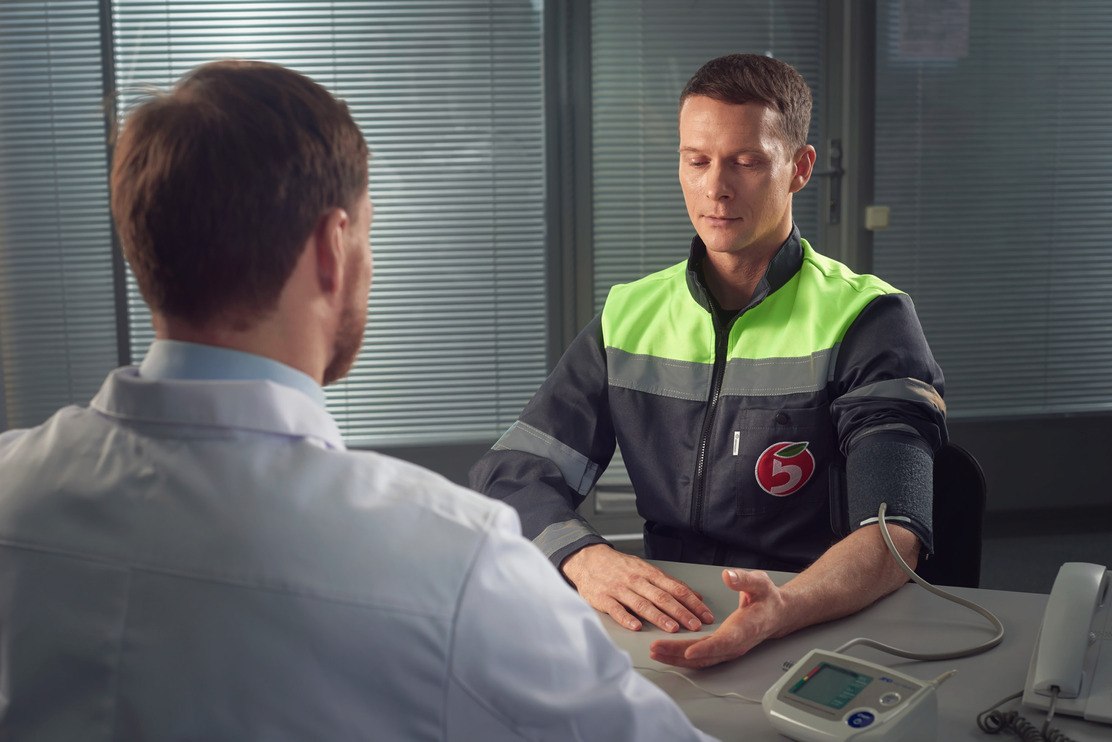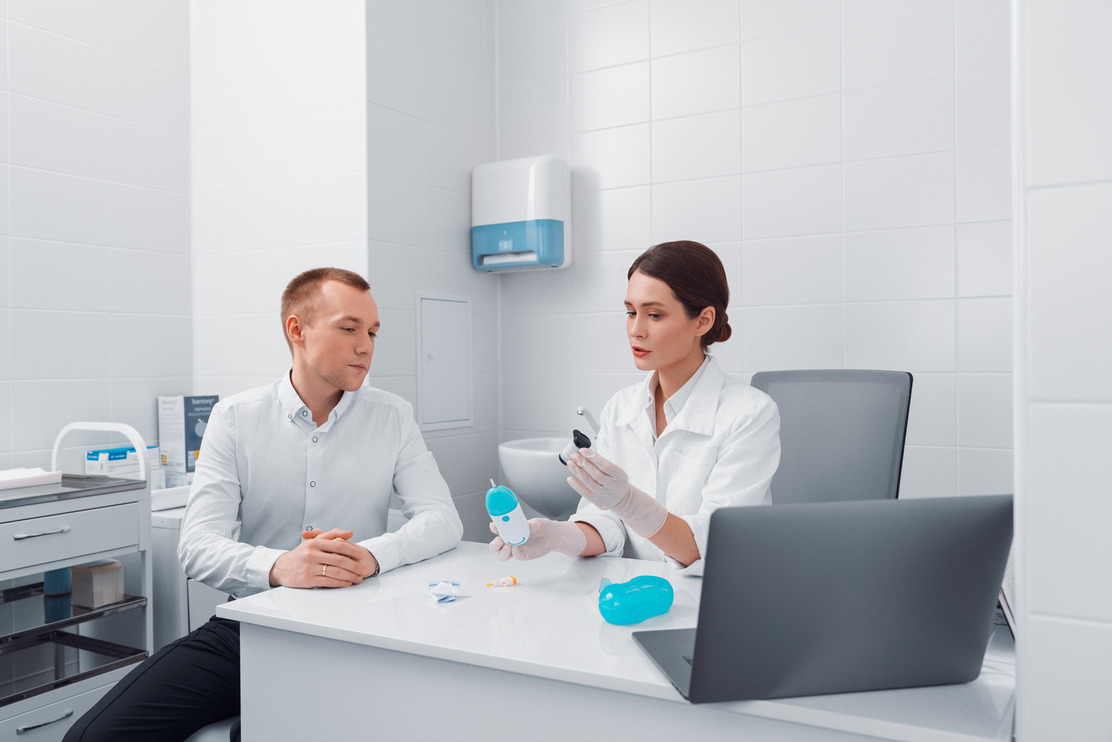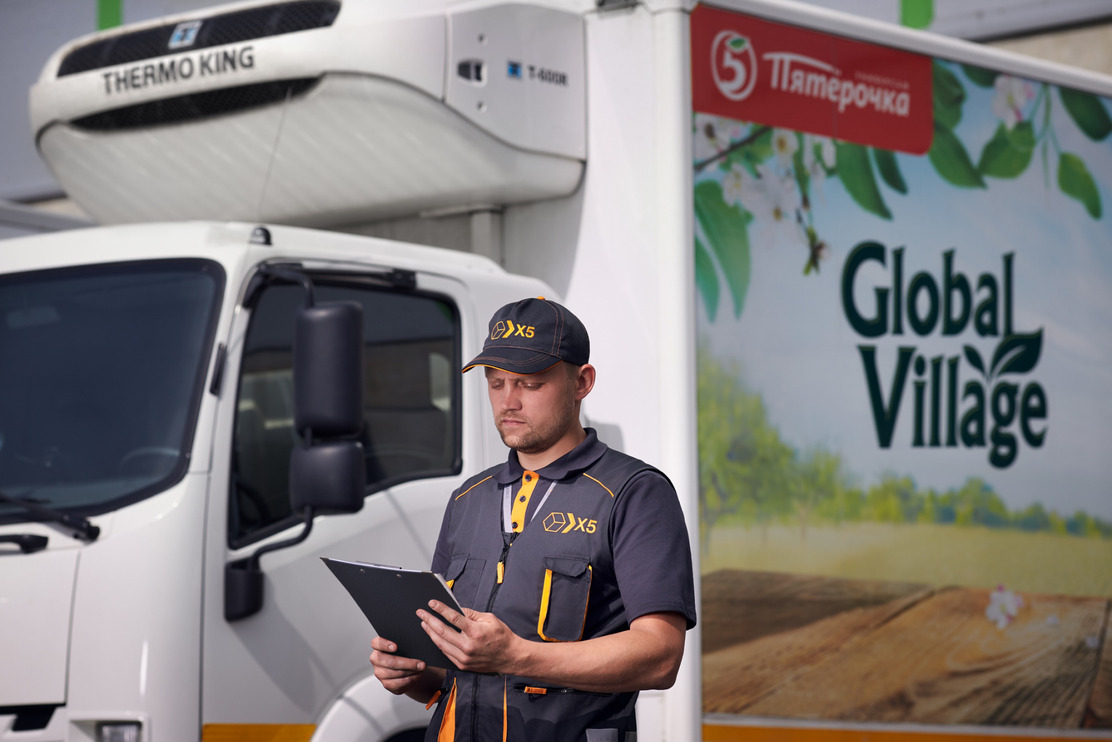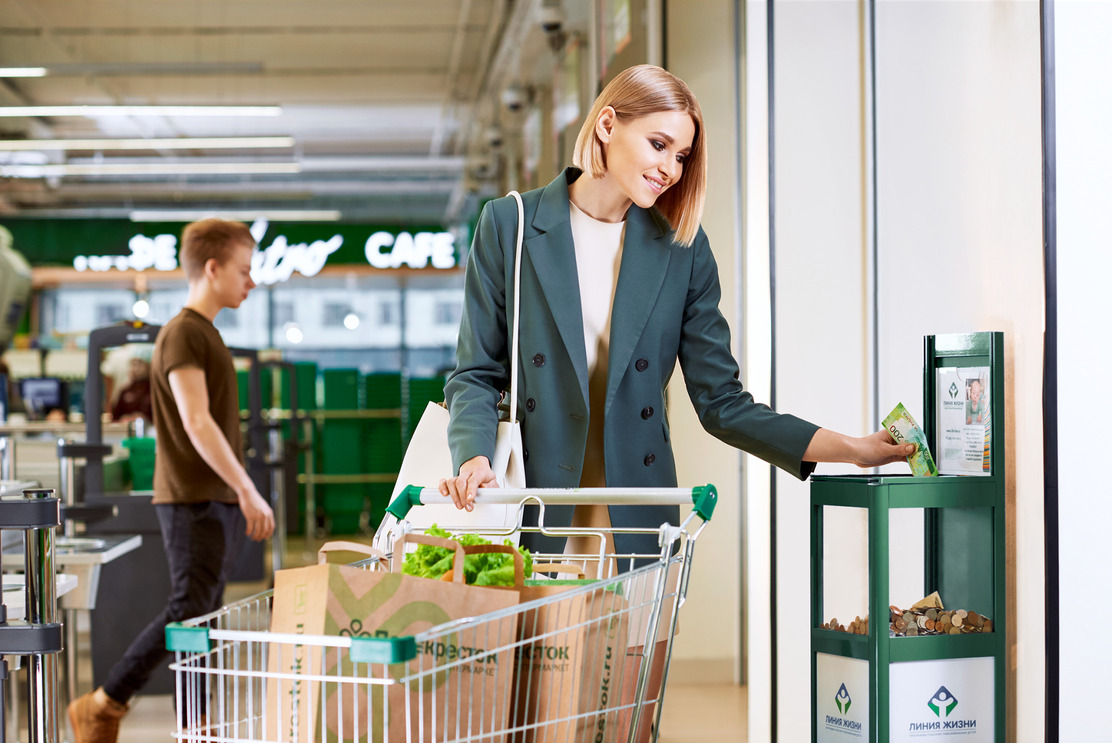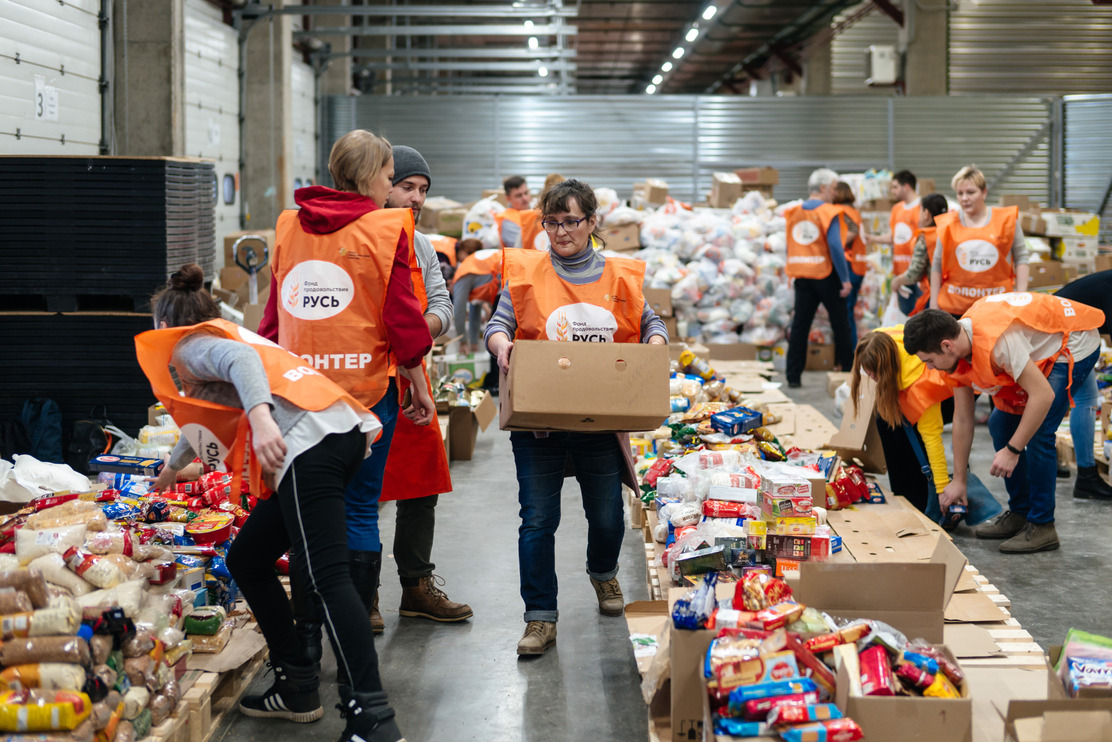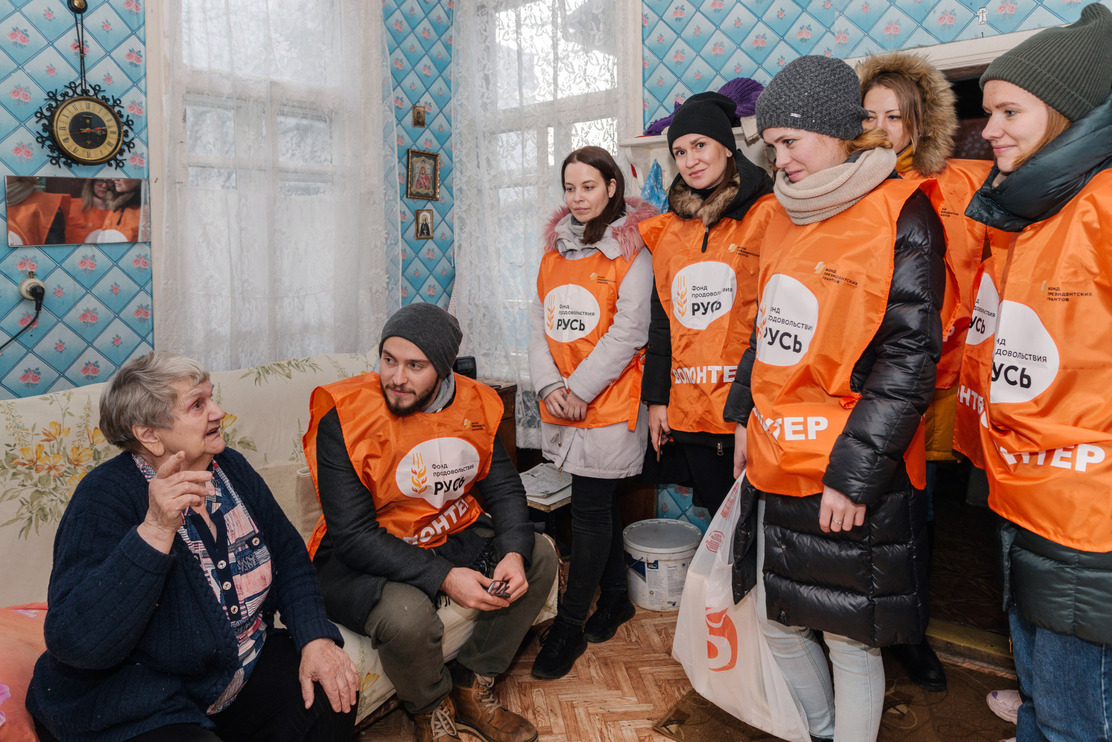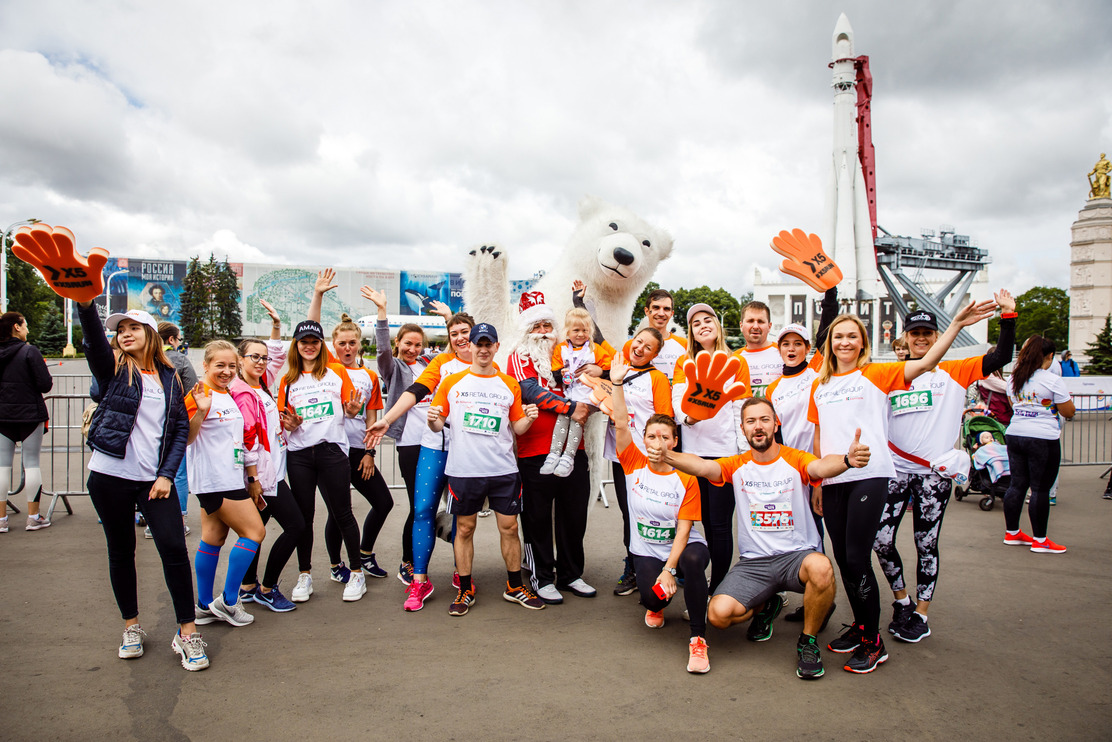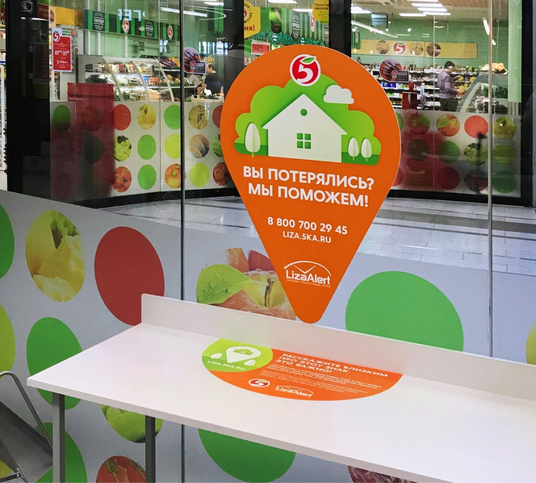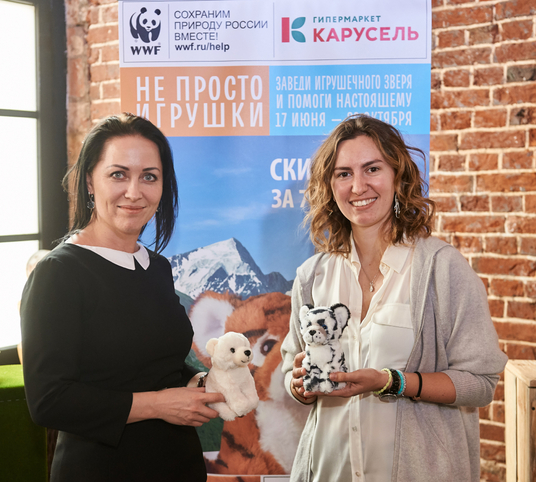We made several important decisions during 2019, including the transformation of our Karusel hypermarkets and the establishment of 5Post and Perekrestok Online as separate business units within the organisation. We also resolved to gather our numerous sustainable development initiatives under a more cohesive system and for sustainable development to become an integral part of our business strategy and decision-making. In December 2019, the Supervisory Board approved a three-year sustainable development strategy for X5 Retail Group.
Our investments in 2019 totalled RUB 81 billion, which represents 4.6% of 2019 revenue. The structure of our investments is changing towards a higher share of refurbishment and non-store capex, which reflects the evolving technological landscape and customer preferences for a better shopping atmosphere. We adhered to an 80/20 approach to dividing our efforts and investments between existing offline operations that are already generating profits and cash flows, and development of new initiatives with strong business cases that will enable X5 to stay competitive and profitable in the fast-changing and increasingly digital retail universe.
Despite our sizeable investment programme, our net debt/EBITDA under IAS 17 remained at a comfortable level of 1.71x, and we increased our dividend payouts to RUB 30 billion (RUB 110.47 per GDR) for 2019, up 20% vs. 2018 in roubles.
Main highlights of 2019
- We maintained leadership in revenue and LFL revenue growth against our main peers.
- We achieved positive developments in personnel turnover and labour productivity.
- Despite the downward trend in food inflation in H2 2019, our EBITDA margin under IAS 17 was in line with target levels for the full year.
- Our investments in prices in H2 2019 were successful at stimulating consumer traffic.
- We continued to adapt to consumer needs with the successful testing and launches of new CVPs in our proximity and supermarket formats.
- We took steps to develop new businesses with the establishment of 5Post as a separate business unit with an approved growth model and organisational structure.
- We continued to develop our omnichannel business model and pilot new services.
- The transformation of X5’s hypermarket format was launched in order to focus on the most promising segments of the market.
- To support our digital transformation we created a digital management committee, started the implementation of a more flexible IT platform and launched the X5 Digital Academy.
- X5 has launched a massive digital transformation programme, with over 30 product teams working on digitalisation of critical business processes, develop- ing the CVM system and improving our ability to make data-driven decisions.
- In Pyaterochka alone, the digitalisation of key commercial processes like assortment, pricing and promotions yielded an estimated RUB 2 billion positive effect on EBITDA in 2019. These systems will be further refined and expanded in 2020.
- Our CVM process is based on constant analysis of customer behaviour and feedback through a wide variety of channels, and we are putting in place systems that enable us to respond even faster to requests, complaints and recommendations.
- X5's Supervisory Board approved our first Sustainability Strategy, which covers the period 2020–2022.
Sources of growth in 2019
At X5, we aim to ensure that customers can shop with X5 however, wherever and whenever they want. We already help them to get an affordable meal on the table through our extensive network of Pyaterochka proximity stores (15,354 stores at the end of 2019) and through omnichannel shopping for an expanded assortment within our Perekrestok supermarket brand (852 supermarkets at the end of 2019 and four dark stores that delivered 1.4 million online customer orders in 2019).
We increased our selling space by 12.0% in 2019 to 5,975 thousand square metres and opened 1,866 new stores (net of 300 closings), which was less than in 2018. Around 50% of these openings replaced less efficient food retail operators. X5 continued to consolidate the offline food retail market in both the proximity and supermarket segments in 2019 and gained market share. Management sees this trend as ongoing.
Our LFL revenue was positive in both the proximity and supermarket formats, while Karusel hypermarket LFL results were below expectations, as online grocery shopping is replacing hypermarkets for customers with a stock-up shopping mission, and most hypermarket operators suffer from weak or negative LFL trends.
Our Perekrestok supermarket operations continued to enjoy positive customer response to the updated CVP, which is centred around fresh assortment, in-store gastronomic experiences and attractive offers to loyal customers. Perekrestok successfully piloted a large supermarket format that will feature cafes, in-house cooking facilities and a larger assortment of premium food products. Stores transformed from Karusel hypermarkets will be opened in this format. The net promoter score (NPS) in Perekrestok stores reached 21 points and for the online service 82 points.
In the proximity segment, we worked on the assortment in 2019 to boost LFL sales: we revised the 28 main product categories to make our offer within these categories more relevant to customers, we launched initiatives aimed at improving the freshness of goods in several traffic-building categories, and we continued to develop new private-label products. We expect these initiatives will further increase the attractiveness of our product range to clients in X5’s proximity and supermarket formats. During 2019, we also achieved greater engagement among personnel in our stores, which enabled us to improve service and keep the format’s NPS positive.
To further cement our leadership in the prox- imity segment, the Pyaterochka team, after careful piloting of innovative new store features, opened the first proximity store using a new CVP in September 2019 in Moscow. Over the course of Q4 2019, we opened 32 new-concept Pyaterochka stores. Regardless of location (by traffic, income or region), the first results of the new CVP proximity stores are encouraging. We see solid customer traffic pickup in these stores, which feature a completely new look and feel, as well as expanded fresh categories and a ready-to-eat assortment, an in-store bakery and a coffee point, plus innovative retail solutions such as self-checkouts and electronic price tags. One of the main challenges for our team in 2020 will be to deliver the planned number of new store openings, all of which will use the new CVP, plus the renovation of 1,300 existing Pyaterochka stores to the updated format. Keeping capex per store at levels that will boost our ROIC is another challenge the team will have to address.
Market environment
We operate in an industry that is undergoing a significant change. Consumer behaviour is shifting towards even greater convenience, competition from online players is rising, and advanced technologies are reshaping the ways in which consumers can satisfy their demand for food.
The macro backdrop for Russia’s food retail sales in 2019 was generally positive. GDP expanded by about 1.3% p.a. in real terms. Real wage growth was firmly in positive territory each month of the year, with annual growth of 2.9%. Food inflation averaged 5.9% for H1 2019 and 4.3% for H2 2019, staying healthy overall, but normalising towards 2.6% by the year end. The consumer confidence index improved from -16% to -13% over the course of 2019, and the VAT increase from 18% to 20% did not have a significant impact on food demand. Retail sales overall grew year-on-year by 6.2% in nominal and 1.6% in real terms. Food retail sales (excluding online and ready-to-eat deliveries) increased by 6.7% year-on-year in nominal terms in 2019, which is a moderate expansion rate.
The share of the top five retailers in 2019 increased to 29%. Some retailers, including X5, continued organic expansion at a pace faster than market average, while others either slowed or opted for mergers as a way to consolidate their market share. Two large mergers took place in the sector. One of them created Russia's third-largest food retailer through the merger of Red & White, Dixy and Bristol. Another was the merger of the offline Lenta hypermarkets with the online grocery operator Utkonos, which has created a new omnichannel player. In addition, we saw active development of online and tech players in the Russian food market, including Yandex.Lavka, Samokat and others.
X5 has chosen a strategy of balanced organic growth, with a focus on efficiency, innovation and technological advancement, while keeping our customers at the centre of everything we do.
The regulatory framework in the food retail indus- try did not materially change during 2019. Going into 2020, the market expects liberalisation of certain alcohol retail regulations, which may give a boost to online sales of this product category.
Customers in focus
As the CEO, I strongly believe that the right way for X5 Retail Group to further strengthen its market leadership is through continued customer-centricity and technological advancement.
We spent considerably more time in 2019 digging deeper into our customers’ needs and their shopping missions. We strengthened our Strategy department and redefined our addressable market to the food service market from just food retail.
Customer data from our loyalty cards and our big data team and their capabilities were the main pillars of this process. By the end of 2019, we had issued over 130 million loyalty cards and had 40.6 million active loyalty card holders across our retail formats. These loyal customers con- tributed 70% of our net retail sales even though they represent only 55% of customer traffic. We already service 14–16 million customers on a daily basis in our stores but want to continue attracting new customers and increasing the base of highly valuable loyal clients through personalised offers. Our ability to do this is constantly growing thanks to the roughly 7 million data points we receive every day to use for data analytics.
In order to address more customer missions based on new technologies, we launched express delivery of ready-to-eat and groceries from our network of physical stores. Demand for express delivery of food and discretionary consumer products is growing in large cities, and we have already started to build our team and internal expertise to address this new trend.
In hypermarkets, customer trends are different. A number of Russian hypermarket operators, including Karusel, are either downsizing their operations or continue to suffer from a customer outflow to the online and proximity segments. We will offer our Karusel customers the opportunity to stock up with Perekrestok online instead of 54 Karusel stores — X5 will close 20 of these stores and transfer the remaining 34 to Perekrestok. In Q4 2019, we combined the loyalty programmes of Perekrestok and Karusel so that consumers could redeem their points in either of the two formats or online. There are an additional 37 Karusel stores that will continue operating as our branded hypermarkets, as their customer traffic and operating metrics are satisfactory.
We continued our work in 2019 to expand our fresh assortment and offer more healthy prod- ucts, with greater variety, on our shelves. This was achieved partly by introducing private-label health food brands to our assortment. Within this framework, we increased the share of private-la- bel goods to 13.9% in the proximity segment
and to 7.9% in the supermarket segment by the end of 2019.
To better adjust the assortment in stores to customer needs, our formats worked with their in-house big data colleagues on an assortment review process powered by advanced analytics. We should expect a positive impact on sales from the introduction of automated assortment reviews across our retail formats.
Margin performance
The commercial and operating departments of our retail formats delivered solid results in 2019 through more efficient procurement, and also by reducing inventory shrinkage, maintaining a stable level of promo activity and achieving greater efficiency in promo. Among these factors, reduction of shrinkage was the largest contributor to X5’s 43 b.p. gross margin expansion year-on-year in 2019. This result was possible thanks to a renewed focus on operational excellence, supply chain and in-store business processes, as well as new quality control initiatives in fresh product categories that we introduced last year. At the same time, we operate in a competitive environment against a stagnating consumer income backdrop. For these reasons and in order to support our attractive price positioning in the Pyaterochka and Perekrestok formats, manage- ment of our retail operations resolved to be more price-aggressive in H2 2019, which resulted in lower gross margin performance during this period but enabled the Company to maintain positive LFL traffic throughout the period.
In 2019, we successfully developed and introduced a new pricing system that provides centralised pricing solutions with higher-quality decision-making and greater speed based on advanced analytics. When rolled out in 1,700 Pyaterochka stores in Moscow, the use of this system yielded an improvement in commercial margin performance. The rollout of the system across all Pyaterochka stores is planned for Q1 2020.
The main source of operating leverage within our operating costs is in-store personnel. Their motivation and compensation, as well as the resulting engagement and labour productivity, were among the KPIs for the formats and for X5 Retail Group top management in 2019. I consider the results achieved in this area to be very encouraging: in the proximity format, we reduced personnel turnover by 24 percentage points during 2019; in the supermarket format, turnover was down by 14 percentage points. We continued to invest in compensation of our retail personnel, closely monitoring labour market benchmarks for the sector. We believe that fair compensation, training and motivation for our employees are crucial for our stores to generate sustainable positive LFL traffic.
In order to support and enhance the efficiency of our operations, X5 opened three distribution centres, increasing the total count to 42 as of the end of 2019. We also purchased 468 new trucks (including smaller cargo vehicles for client deliveries in our online operations and heavy trailer units for the truck fleet). We invested RUB 5.1 billion in logistics and transportation in 2019, including efficiency projects to reduce supply chain operating costs, optimise empty-run rates for our fleet and cut CO2 emissions by replacing truck engines with hybrid-gas ones. Our logistics costs as a percentage of revenue decreased by 14 b.p. year-on-year in 2019.
New regions of our operations in Russia, where our local market share is still below 10%, continued to demonstrate a positive trend in per store cash EBITDA margin and ROI evolution over 2019. This result was achieved due to our stricter requirements for new store openings, more detailed post-investment analysis of previous openings and use of big data tools for new location selection. We will continue expanding our store network at a reasonable pace in order to minimise cannibalisation, and will rely on data analytics for greater accuracy of decision-making.
Sustainable development
In 2019, the Supervisory Board approved a three-year sustainable development strategy. We worked out a detailed plan and will be setting measurable targets next year that will incorporate sustainable development principles into all business processes. When the strategy was approved in December, we had already identi- fied areas where we have systems in place to measure performance, and we identified those areas where management processes need to be introduced in order to establish targets and measure performance.
More and more of our customers want to know where our products come from and how they are produced. We are committed to offering the best-quality products for affordable prices in our stores. Addressing key environmental, social and governance issues will also be part of our core activities going forwards.
In line with our business profile, X5 has identified four key sustainable development goals (SDGs) where we can have the greatest impact:
- zero hunger,
- good health and well-being,
- decent work and economic growth,
- responsible consumption and production.
Beyond these four key objectives, X5 will also focus on seven additional SDGs that it con- tributes to indirectly: climate action, marine ecosystem preservation, terrestrial ecosystem preservation, affordable and clean energy, gender equality, reduced inequalities, and sustainable cities and communities.
I am pleased that X5 can now integrate sustain- able development into our strategic objectives. We have already embarked on a mission to reduce our environmental footprint, promote responsible consumption, support efficient resource use and protect vulnerable groups in society. Our vehicles are now greener and produce less emissions, and the energy-saving equipment in our stores is more efficient. X5 is also one of the leading Russian companies when it comes to waste recycling, having sent nearly 600 kt of cardboard, polyethylene and plastics to recycling facilities in 2019. As part of our sustainability strategy, we are also establishing targets to reduce the solid waste and food waste generated by our activities. We leverage our scale to support food aid programmes and to run our own social initiative called the Basket of Kindness. All of this is just a fraction of what we are doing in the area of sustainable development.
Strategy evolution — new initiatives
Our strategy has three main pillars: ongoing improvements to the efficiency of the existing business, digital transformation and develop- ment of new businesses based on new technol- ogies and innovation. Following the adoption of our sustainability strategy in 2020, we will also be integrating sustainability targets into our overall business strategy.
We have advanced in the main part of our current strategic plan, which is strengthening the existing business. We slowed the pace of our expansion so that we could improve the quality of new openings and investment returns. We focused on driving sales densities in our stores higher, and this will remain the priority for our offline opera- tions. We understand what our target client looks like today, but more importantly, we have a vision of how this client will look and act 10 years from now, driven by technological change. This knowledge directs us towards greater adaptation of the assortment to local needs, more automation of our business processes and increased integration of advanced analytics in our decision-making across all business processes within X5.
Within our digital transformation, we continue to develop our big data capabilities, now tested with several applications and successful pilots. Our online business will be expanding into several new regions in 2020. To further move towards satisfying demand from customers with a stock-up mission via online, we will continue to downsize our Karusel operations, aiming to capture most of the traffic from closing stores through our online business.
The 5Post fulfilment business has increased its number of strategic e-commerce partners and will be expanding its network of lockers and fulfilment points in our stores.
We set a strategic target to develop competitive advantage of a new kind that will be based on deep predictive analytics and knowledge of our client, on the one hand, and our ability to offer an attractively priced adequate selection of quality products in the most convenient manner, on the other.
Finally, I am sure that our strategic approach to sustainable development will enable us to scale up our sustainable development projects for the clear benefit of all stakeholders.
Outlook
Our outlook for the Russian consumer remains constructive, and we saw no signs of deterioration in consumer demand or consumer co fidence before the COVID-19 pandemic and oil market weakness.
In 2020, we will continue our transformation into a more client-centric and more technologically advanced retailer. This path is not without challenges, but I believe we have the team with the skills and knowledge to identify them and move ahead with innovative solutions. It will be important, as ever, not to lose focus on our profitable current operations, while constantly making decisions in order to prioritise the investments that generate the best returns, but also those that will help X5 to secure its position in the next-gen retail landscape.
We updated our strategy in 2019 to cover new client needs with express delivery and an expanded ready-to-eat assortment. We
will be offering express deliveries from our physical stores, which will be managed separately from Perekrestok Online or Pyaterochka offline operations.
We confirm our target to open up to 2,000 new stores in 2020, gross, in the proximity and supermarket formats. The number of Karusel hypermarkets will decrease in line with the 20 stores that we will close and the 34 stores that will become large Perekrestok supermarkets. In addition to network expansion, we plan 1,300 proximity store refurbishments. While this will require additional capital expenditure, returns on the first refurbished stores that we have launched are above even the returns seen in X5’s previous refurbishment cycle in 2013–2017.
We will further strengthen our digital capabilities, which should help us to support margins in the fast-changing and challenging food market in Russia, both online and offline. Big data-enabled and automated pricing, assortment and promo planning processes should support our net retail sales and the gross margin.
We have the ambition to maintain the sustainable growth of our business and to adhere to strict capital allocation discipline while making smart investments in new businesses. Our focus on efficiency of existing operations will support our annual dividend payments, which we expect to grow steadily.



























